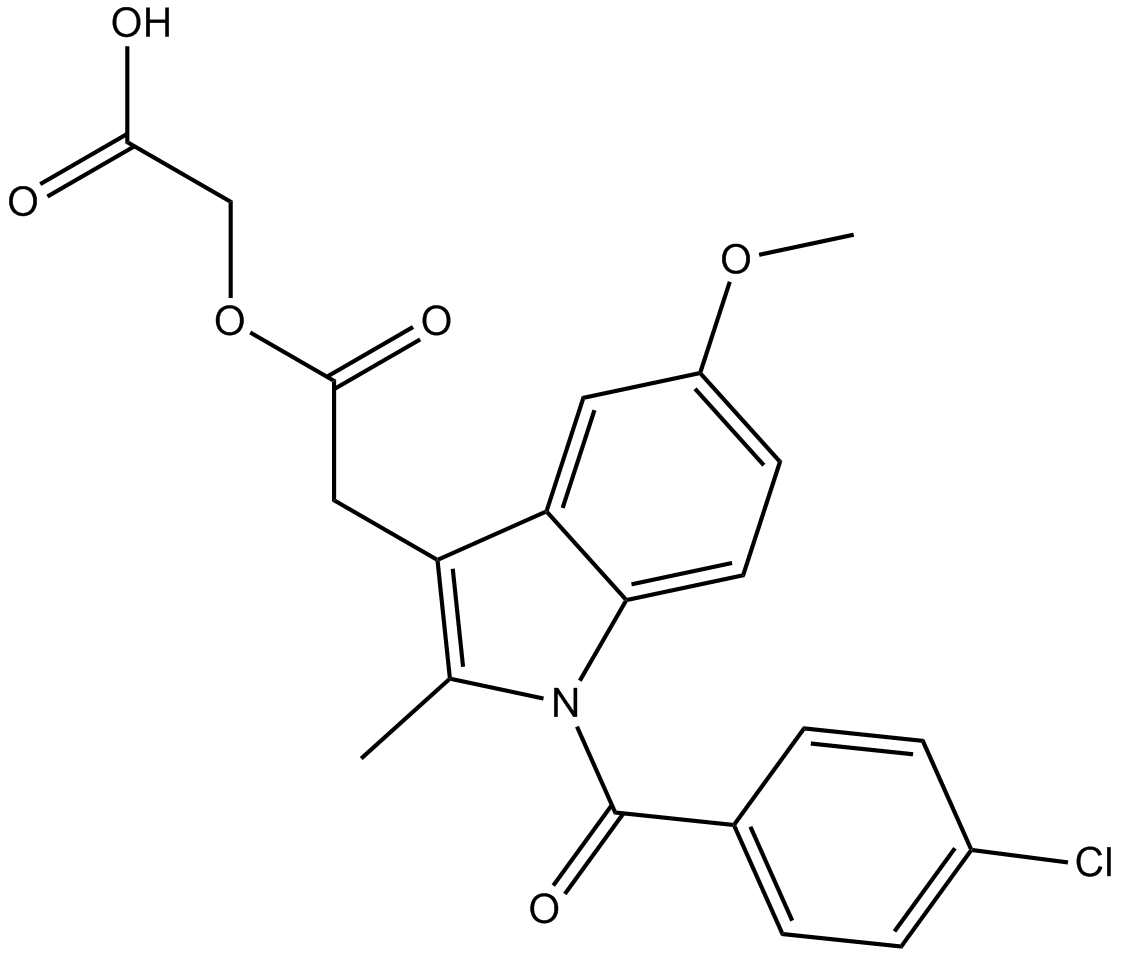Neuroscience
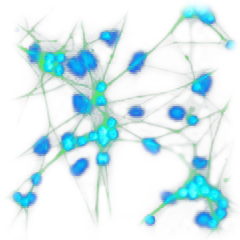
Neuroscience
Neurons communicate with each other, effector organs and sensory organs through the neurotransmitter – receptor pathway at synapses. Neurotransmitters can be divided into 4 major groups: 1. Amino acids (glumate, aspartate, serine, glycine and GABA); 2. Monoamines (norepinephrine, epinephrine, dopamine, histamine, and serotonin); 3. Peptides (opioid peptides, substance P, somatostatin); and 4. Others (acetylcholine, NO, nucleosides).
Targets for Neuroscience
- 5-HT Receptor(549)
- AChR(62)
- AChE(114)
- Alzheimer(109)
- Amyloid β(157)
- BACE(5)
- CGRP (33)
- COX(306)
- DAPK(6)
- Dopamine Receptor(319)
- GABA Receptor(239)
- Gap Junction(23)
- GluR(121)
- Histamine(4)
- Histamine Receptor(241)
- mPEGS-1(5)
- Muscarinic Receptor(46)
- Neuroscience Peptides(94)
- Nicotinic Receptor(70)
- P2 Receptor(2)
- P2X7 receptor(5)
- SSRIs(8)
- Substance P/NK1 Receptor(22)
- NMDA(2)
- Cholecystokinin Receptor(22)
- GPR139(3)
- mAChR(139)
- MCHR1 (GPR24)(15)
- Neurokinin Receptor(60)
- iGluR(139)
- nAChR(66)
- Beta-secretase(26)
- CaMK(33)
- Dopamine Transporter(17)
- Monoamine Oxidase(84)
- Serotonin Transporter(57)
- Behavioral Neuroscience(274)
- DREADD(0)
- Huntington(10)
- Neuroendocrinology(39)
- Neuroprotection(81)
- Ophthalmology(116)
- Pain Research(166)
- Parkinson(49)
- Seizure Disorders(74)
- Prion(6)
- Cholinesterases(13)
Products for Neuroscience
- Cat.No. Nombre del producto Información
-
GC32655
5-HT2 antagonist 1
El antagonista 1 de 5-HT2 es un potente antagonista del receptor 5-HT2, con una débil actividad bloqueadora de los adrenoceptores α1.
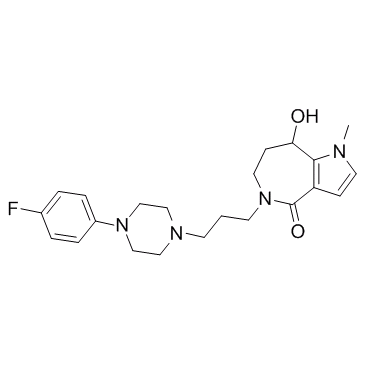
-
GC32664
5-HT2A antagonist 1
El antagonista 1 de 5-HT2A es un antagonista de 5-HT2A extraÍdo de la patente US5728835A y JP 1007727.
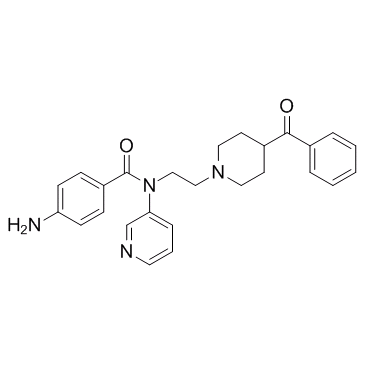
-
GC65568
5-HT2B antagonist-1
5-HT2B antagonist-1 es un antagonista del receptor 5-HT2B activo por vÍa oral con un valor IC50 de 33,4 nM.
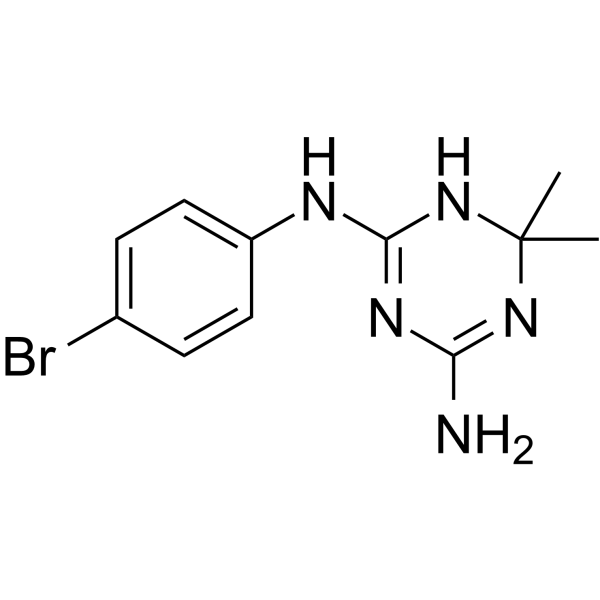
-
GC31263
5-HT3 antagonist 1
El antagonista 1 de 5-HT3 es un antagonista potente y selectivo del receptor de serotonina 3 (5-HT3).
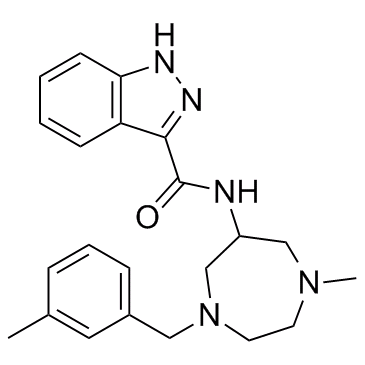
-
GC31247
5-HT3 antagonist 2
El antagonista 2 de 5-HT3 es un antagonista del receptor de 5-HT3.

-
GC65983
5-HT3 antagonist 5
El antagonista 5-HT3 5 es un compuesto de quinoxalin-2-carboxamida, un antagonista del receptor 5-HT3. El antagonista 5-HT3 ejerce antagonismo sobre el agonista 5-HT3 y el 2-metil-5-HT, y muestra un efecto antidepresivo en ratones.
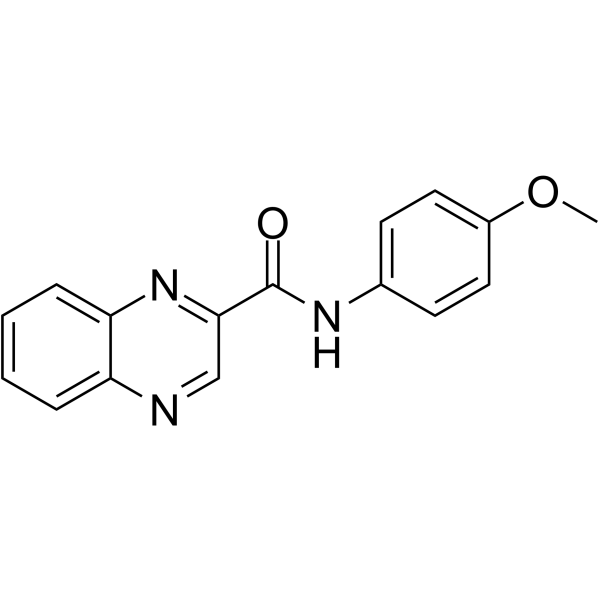
-
GC31227
5-HT3-In-1
5-HT3-In-1 se extrae de la patente EP0748807A1, compuesto ejemplo 8.
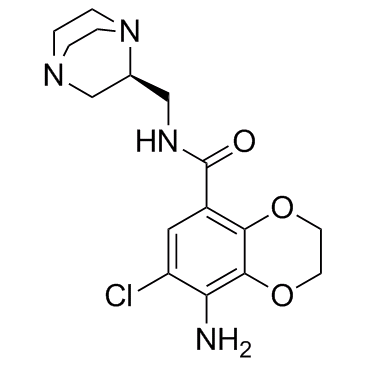
-
GC30314
5-HT4 antagonist 1
El antagonista 1 de 5-HT4 es un antagonista del receptor de 5-HT4 con un pKi de 9,6.
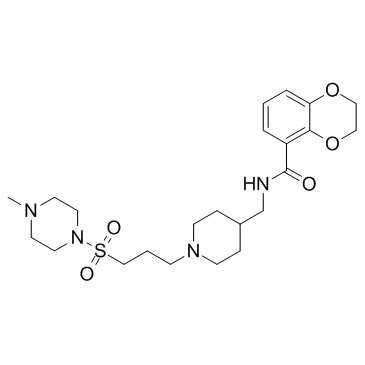
-
GC31144
5-HT7 agonist 1
El agonista 1 de 5-HT7 es un agonista selectivo del receptor de 5-HT7, con una CI50 de 222,93 nM, que se puede utilizar para enfermedades relacionadas con el receptor de 5-HT7, como los trastornos del SNC.
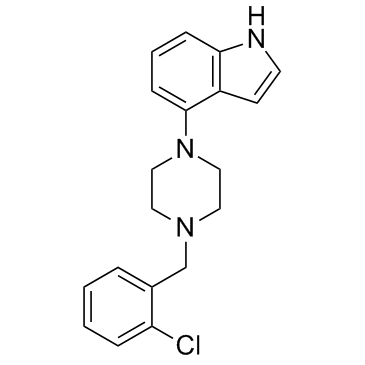
-
GC49655
5-hydroxy Buspirone
A metabolite of buspirone

-
GC49119
5-hydroxy Flunixin
A metabolite of flunixin

-
GC52172
5-hydroxy Indole-3-acetic Acid-d6

-
GC49315
5-hydroxy Indomethacin
A metabolite of indomethacin

-
GC52106
5-hydroxy Isatin
An inhibitor of MAO-A

-
GC42550
5-hydroxy-6-methoxy (S)-Duloxetine
5-hydroxy-6-methoxy (S)-Duloxetine is a metabolite of (S)-duloxetine.

-
GC42553
5-hydroxy-Nω-methyl Tryptamine (oxalate)
5-hydroxy-Nω-methyl Tryptamine is a metabolite of serotonin in humans that has also been found in plants.

-
GC11626
5-Iodo-A-85380 dihydrochloride
α4β2 and α6β2 nicotinic acetylcholine receptors agonist
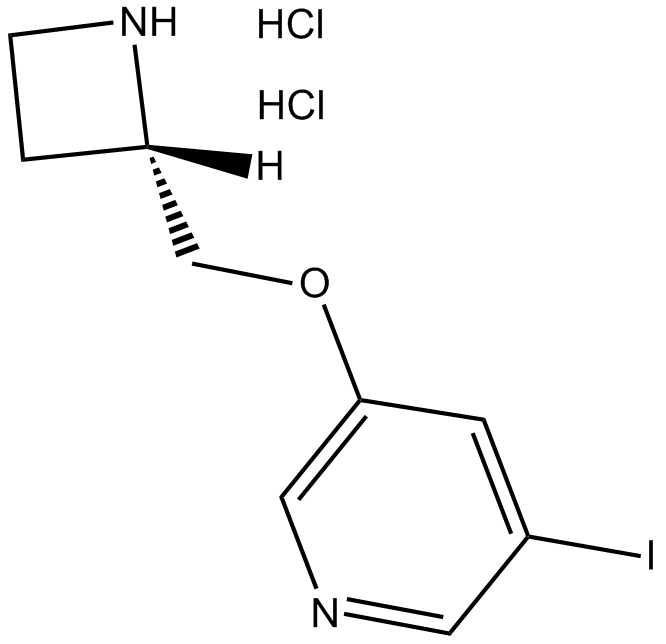
-
GC14225
5-Iodo-A-85380, 5-trimethylstannyl N-BOC derivative
Precursor to ligand for the α4β2 nicotinic receptor
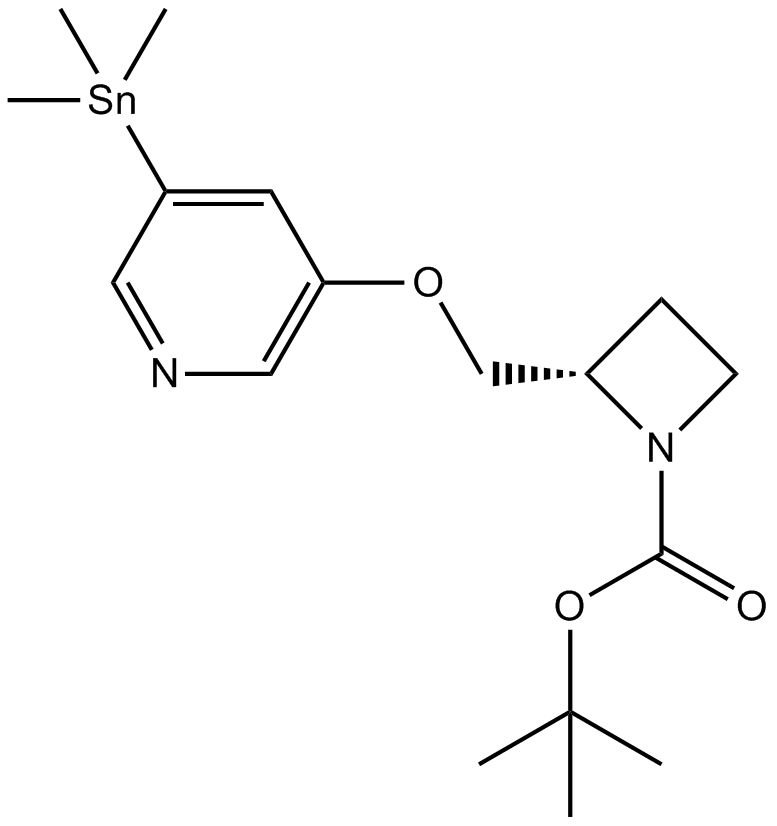
-
GC14940
5-Methoxytryptamine
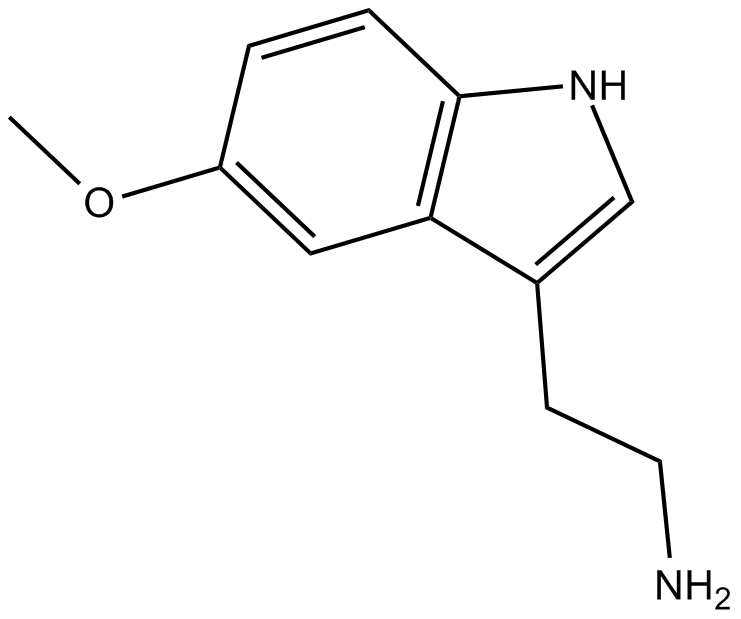
-
GC64182
5-Methoxytryptamine hydrochloride
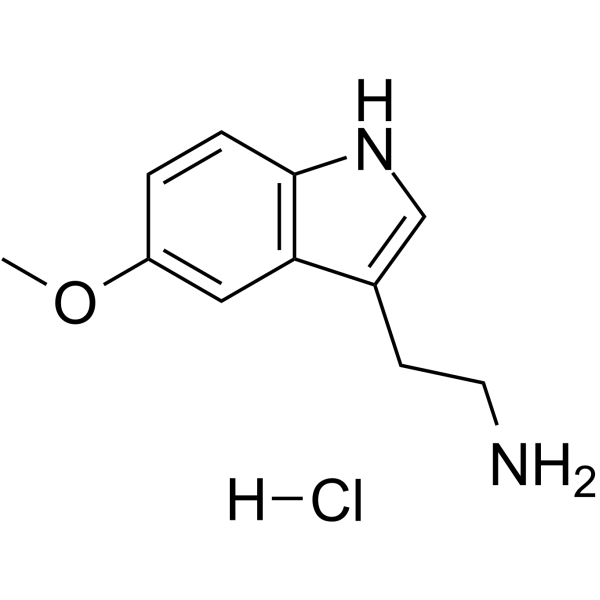
-
GC14604
5-Methylfurmethiodide
muscarinic agonist
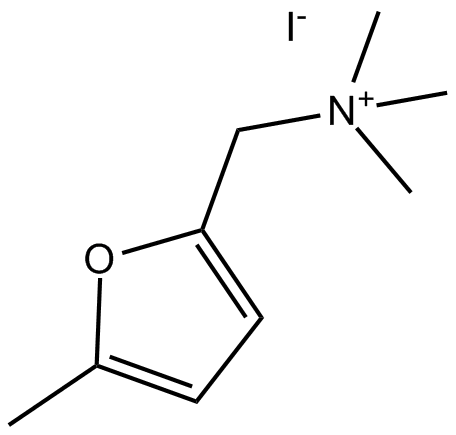
-
GC46706
5-Methyltetrahydrofolic Acid (hydrate)
A biologically active form of folic acid

-
GC17477
5-Nonyloxytryptamine oxalate
5-HT1B agonist
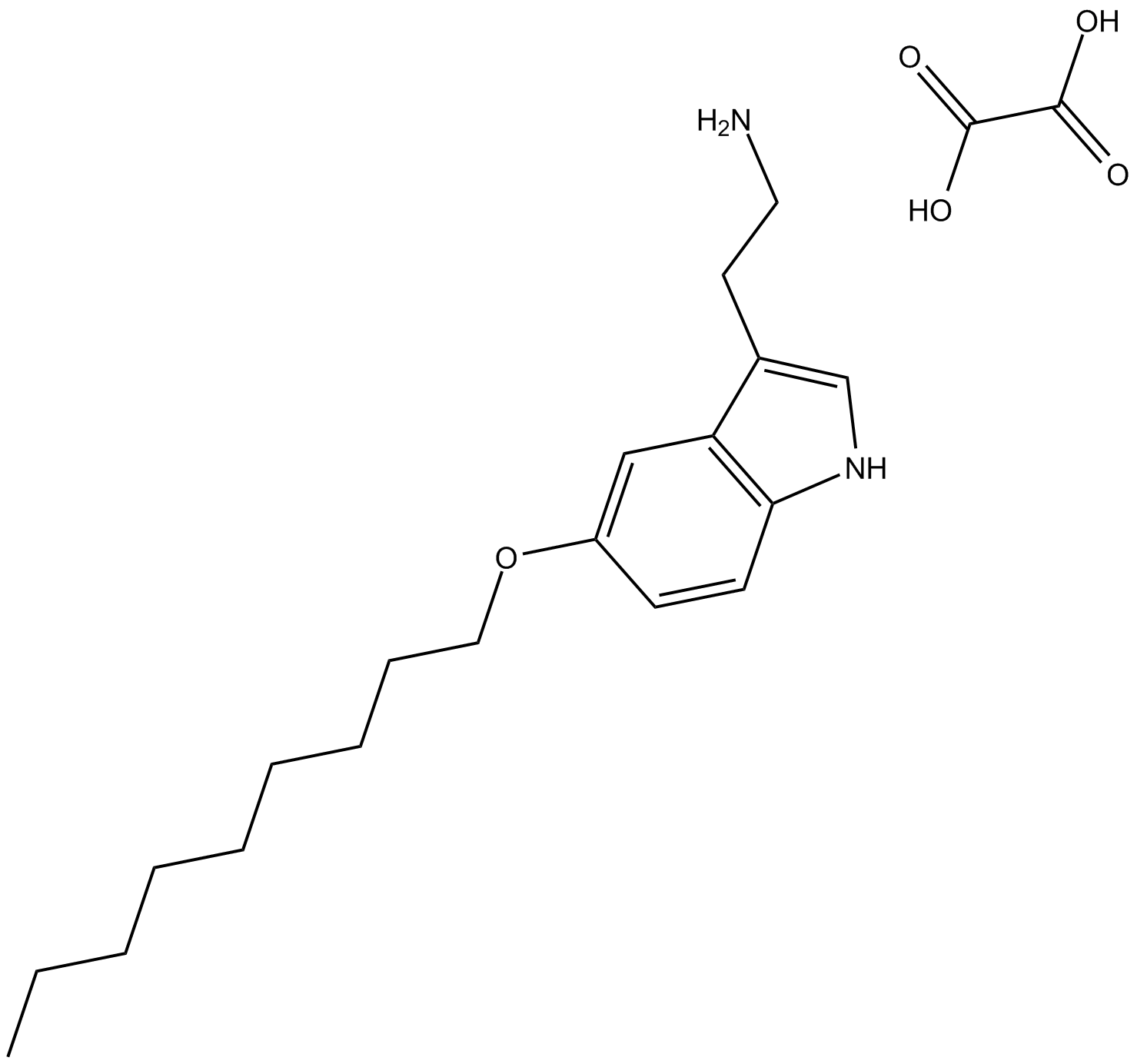
-
GC41156
5-Octyl D-glutamate
5-Octyl D-glutamate, also known as 5-octyl ester D-glutamate, is a stable, cell-permeable molecule that generates free D-glutamate upon hydrolysis of the ester bond by cytoplasmic esterases.

-
GC41094
5-trans Latanoprost
Latanoprost is an F-series prostaglandin analog which has been approved for use as an ocular hypotensive drug.

-
GC41228
5-trans Latanoprost (free acid)
Latanoprost is an F-series prostaglandin (PG) analog which has been approved for use as an ocular hypotensive drug.
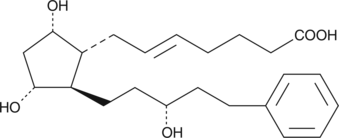
-
GC49438
5-trans-17-phenyl trinor Prostaglandin F2α
The 5-trans isomer of 17-phenyl trinor PGF2α

-
GC31296
5HT6-ligand-1
5HT6-ligand-1 es un potente ligando del receptor 5-HT6 con una Ki de 1,43 nM.
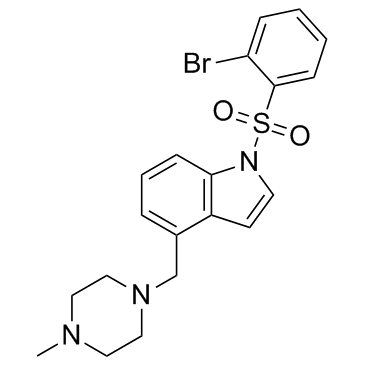
-
GC18176
5α,6β-Dihydroxycholestanol
5α,6β-Dihydroxycholestanol is an oxysterol metabolite of cholesterol formed from conversion of cholesterol epoxides by 5,6-epoxysterol hydrolase.
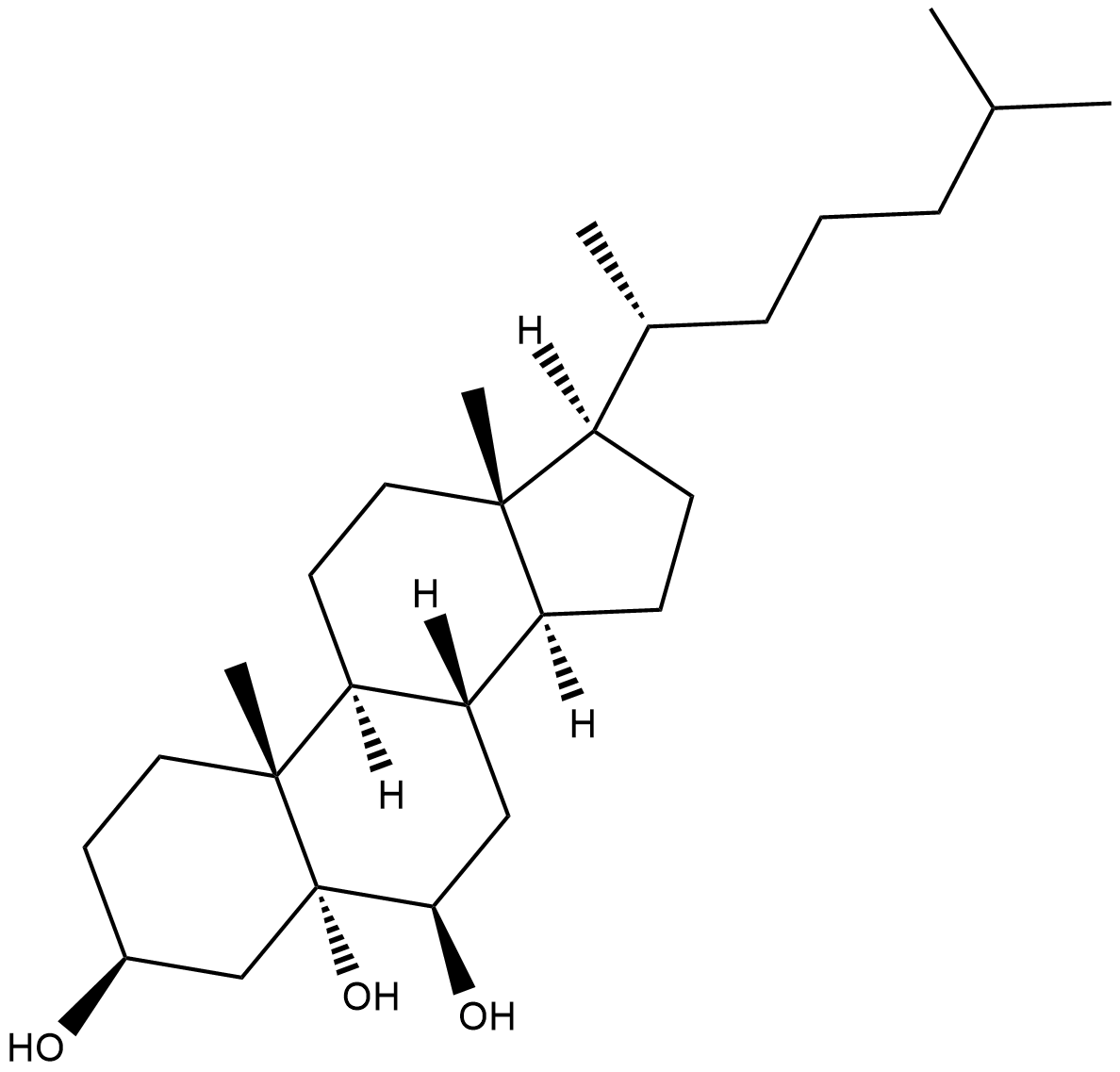
-
GC30943
6,2'-Dihydroxyflavone
La 6,2'-dihidroxiflavona es un nuevo antagonista del receptor GABAA.
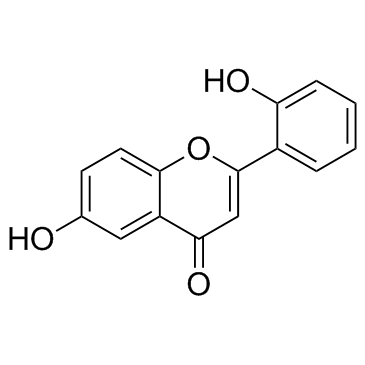
-
GC46720
6,9-Dichloro-1,2,3,4-tetrahydroacridine
A synthetic intermediate in the synthesis of AChE inhibitors

-
GC11284
6-(4-Methoxyphenyl)-3-pyridazinamine
GABAA receptor antagonist
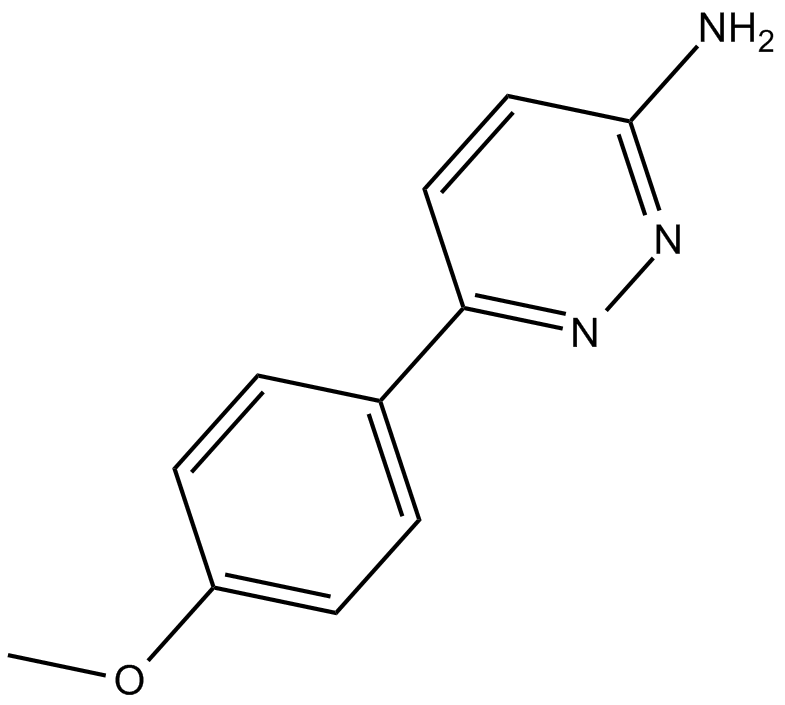
-
GC42572
6-Amino-8-trifluoromethylphenanthridine
6-Amino-8-trifluoromethylphenanthridine (6A-8tFP) is an antiprion agent and a derivative of 6-aminophenanthridine.

-
GC40479
6-Aminophenanthridine
La 6-aminofenantridina inhibe la actividad de plegamiento de proteÍnas del ribosoma (PFAR).

-
GC14000
6-fluoro-DL-Tryptophan
El 6-fluoro-DL-triptÓfano es un potente inhibidor competitivo de la triptÓfano hidroxilasa.
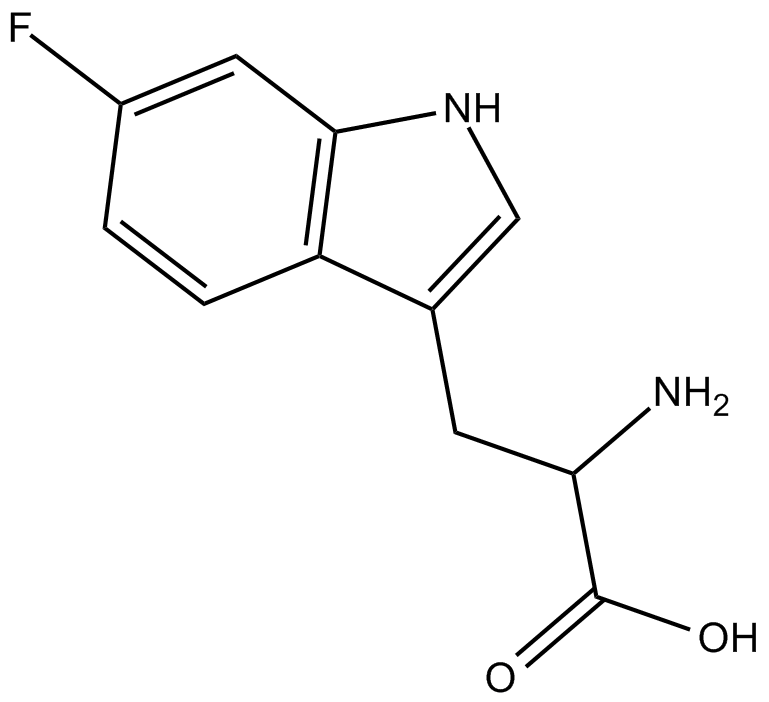
-
GC42580
6-hydroxy Chlorzoxazone
6-hydroxy Chlorzoxazone is a metabolite of chlorzoxazone.

-
GC49183
6-hydroxy Etodolac
A metabolite of etodolac

-
GC16267
6-Hydroxydopamine hydrobromide
El hidrobromuro de 6-hidroxidopamina (6-OHDA) es un análogo estructural de las catecolaminas, dopamina y noradrenalina, y ejerce sus efectos tóxicos sobre las neuronas catecolaminérgicas.
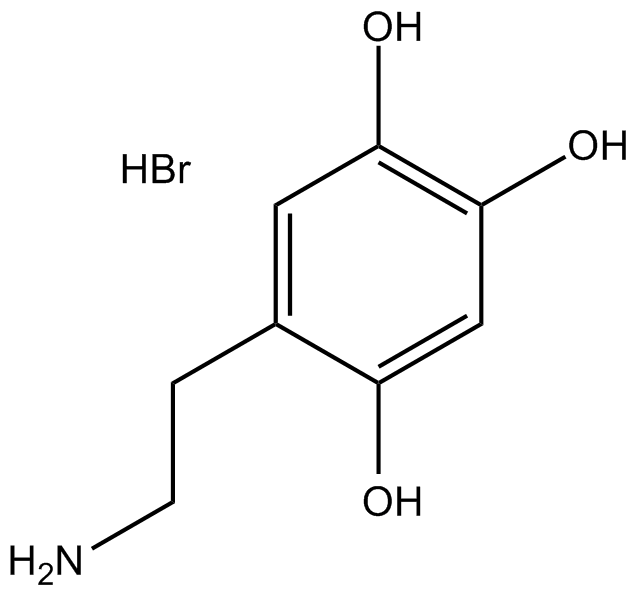
-
GC16153
6-methoxy Naphthalene Acetic Acid
competitive, non-selective COX inhibitor
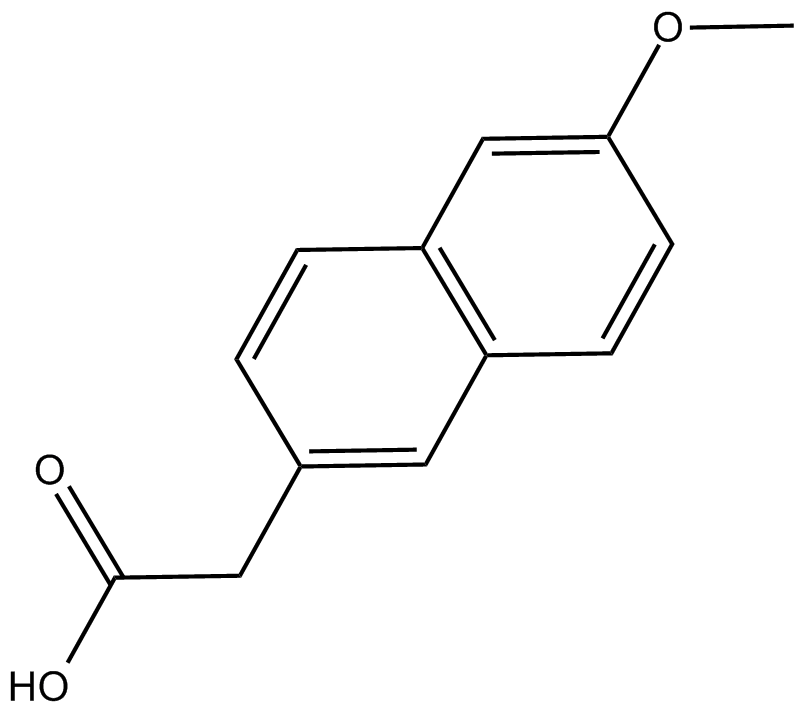
-
GC31309
6-Methoxy-2-naphthoic acid (Naproxen impurity O)
El Ácido 6-metoxi-2-naftoico (impureza O de naproxeno) es un modulador del receptor NMDA extraÍdo de la patente WO 2012019106 A2.
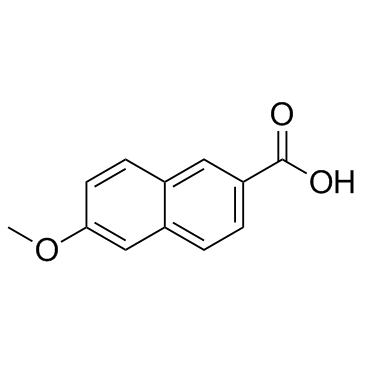
-
GC30898
6-Methylflavone
La 6-metilflavona es un activador de los receptores α1β2γ2L y α1β2 GABAA.
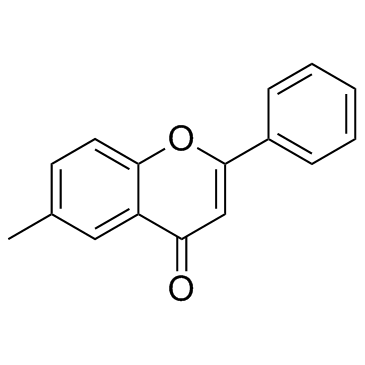
-
GC42584
6-O-desmethyl Donepezil
6-O-desmethyl Donepezil is an active metabolite of the acetylcholinesterase inhibitor donepezil.

-
GC10781
7-Chlorokynurenic acid
El Ácido 7-cloroquinurénico (7-CKA) es un antagonista potente y selectivo del sitio coagonista de glicina B del receptor N-metil-D-aspartato (NMDA) (IC50 = 0,56 μM).
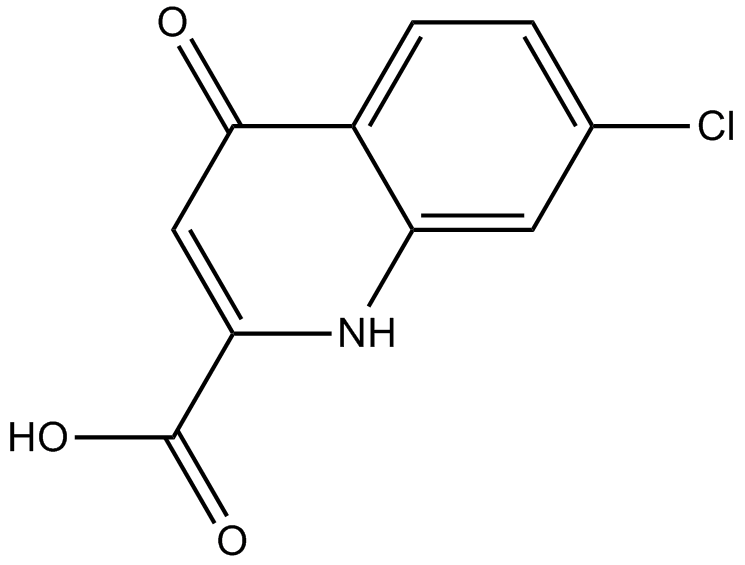
-
GC11395
7-Chlorokynurenic acid sodium salt
La sal sÓdica del Ácido 7-cloroquinurénico (sal sÓdica de 7-CKA) es un antagonista potente y selectivo del sitio coagonista de glicina B del receptor N-metil-D-aspartato (NMDA) (IC50 = 0,56 μM).

-
GC46242
7-dehydro Cholesterol-d7
7-dehydro Cholesterol (7-DHC) is an immediate precursor of cholesterol

-
GC48649
7-hydroxy Chlorpromazine (hydrochloride)
An active metabolite of chlorpromazine

-
GC35192
7-Hydroxy-3,4-dihydro-2(1H)-quinolinone
La 7-Hidroxi-3,4-dihidro-2(1H)-quinolinona (3,4-Dihidro-7-hidroxi-2(1H)-quinolinona) es un inhibidor débil de la MAO-A, con un IC50 de 183 μM, y no tiene efecto sobre MAO-B.
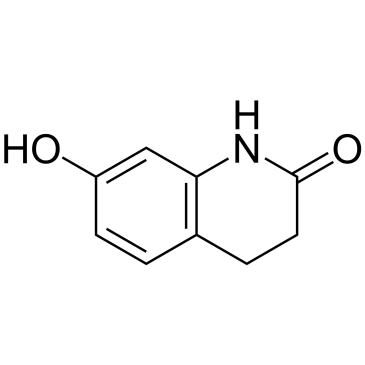
-
GC16574
7-Hydroxy-DPAT hydrobromide
D3 dopamine receptor agonist

-
GC40572
7-keto Cholesterol
El colesterol 7-ceto, oxisterol tóxico, inhibe el paso limitante de la biosíntesis de ácidos biliares colesterol 7 alfa-hidroxilasa, así como también inhibe fuertemente la HMG-CoA reductasa (la enzima limitante de la biosíntesis del colesterol).

-
GC46241
7-keto Cholesterol-d7
7-keto Cholesterol is a bioactive sterol and a major oxysterol component of oxidized LDL

-
GC48880
7-Methoxyflavone
La 7-metoxiflavona es un compuesto aislado de Zornia brasiliensis.

-
GC15338
8,11,14-Eicosatriynoic Acid
A Cox, 12-LO, and 5-LO inhibitor
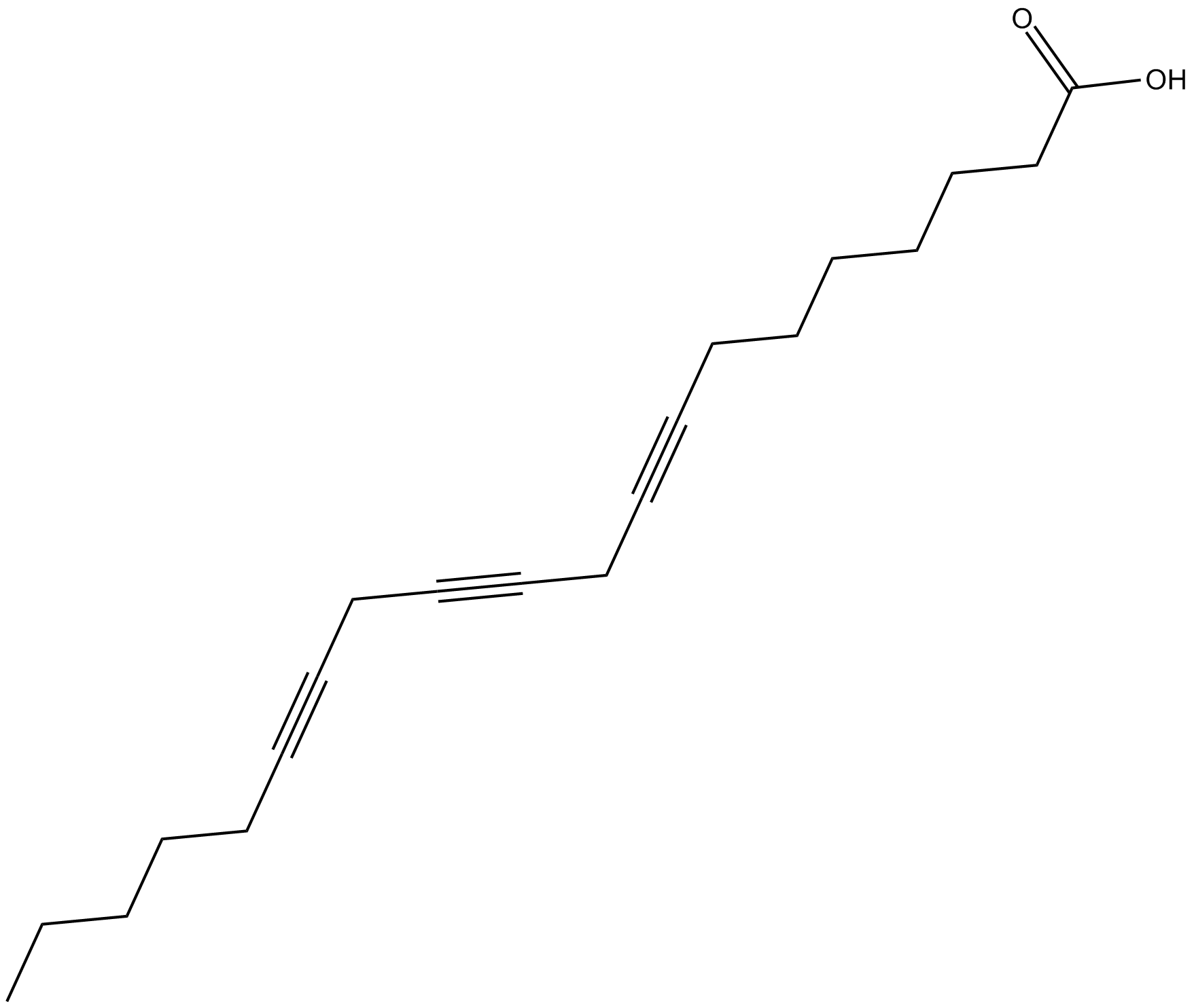
-
GC40587
8,12-iso-iPF2α-VI
8,12-iso-iPF2α-VI is an isoprostane produced by non-enzymatic, free radical-induced peroxidative damage to membrane lipids.
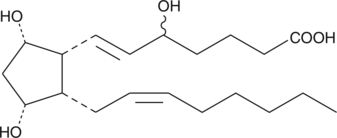
-
GC49017
8-hydroxy Amoxapine
A metabolite of amoxapine

-
GC42626
8-hydroxy Efavirenz
8-hydroxy Efavirenz is a major oxidative metabolite of the non-nucleoside reverse transcriptase inhibitor efavirenz.

-
GC18654
8-hydroxy Loxapine
8-hydroxy Loxapine (8-OH loxapine) is a metabolite formed when loxapine , an atypical antipsychotic, is metabolized by the cytochrome P450 isoform CYP1A2.
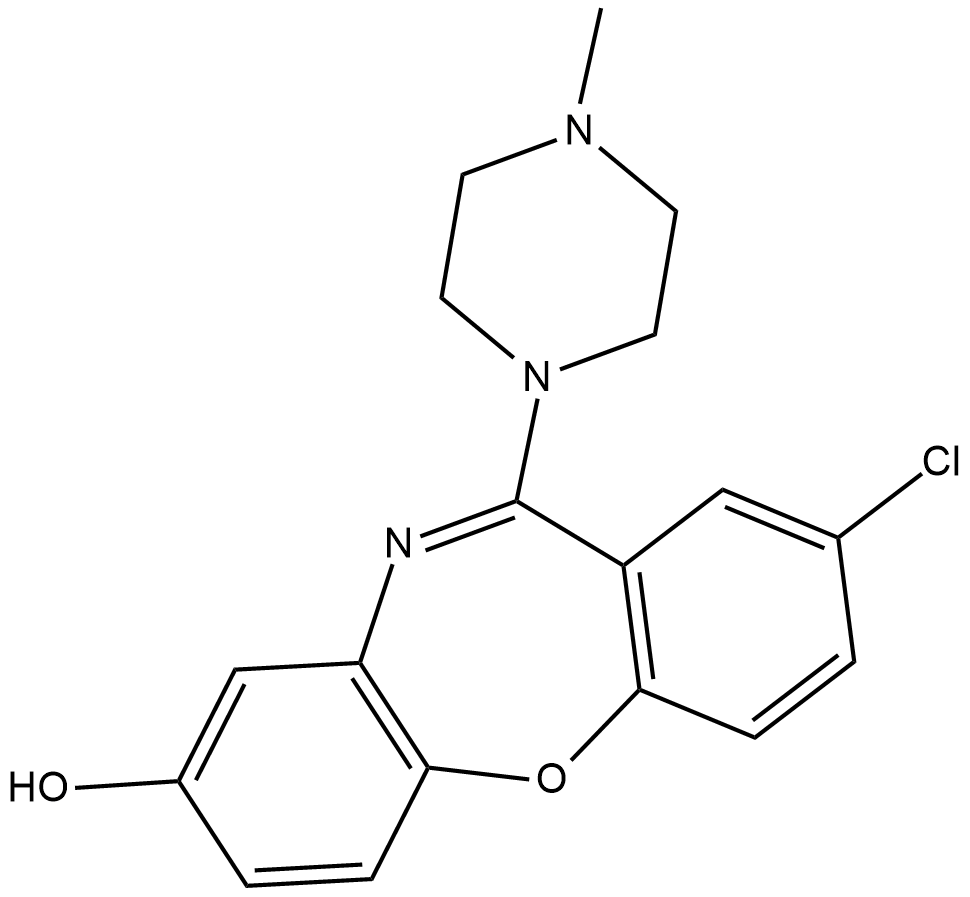
-
GC49544
8-hydroxy Mirtazapine
A metabolite of mirtazapine

-
GC14966
8-Hydroxy-DPAT hydrobromide
El bromhidrato de 8-hidroxi-DPAT (bromhidrato de 8-OH-DPAT) es un agonista de 5-HT1A potente y selectivo con una pIC50 de 8,19.
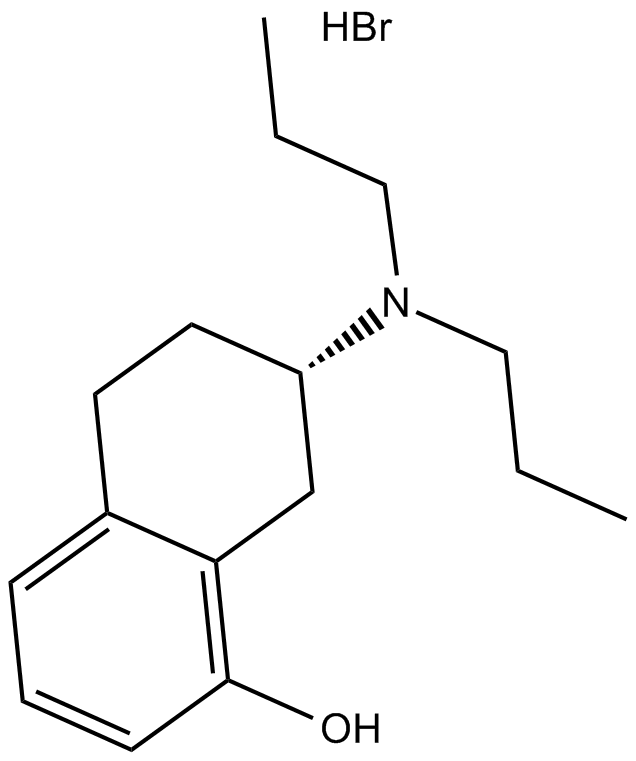
-
GC12427
8-Hydroxy-PIPAT oxalate
5-HT1A receptor agonist
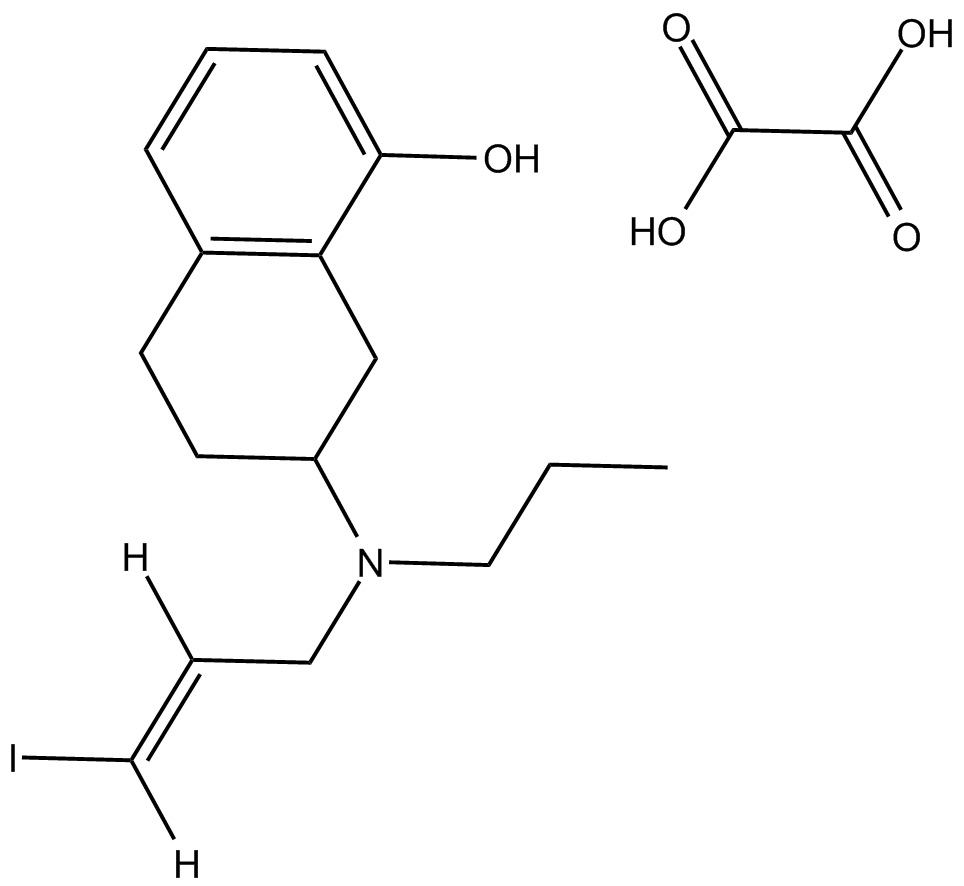
-
GC40759
8-methyl Nonanoic Acid
Capsaicin, the chemical that imparts the spicy-hot quality of chili peppers, is produced by the fruits of plants belonging to the Capsicum family.

-
GC30888
8-OH-DPAT (8-Hydroxy-DPAT)
8-OH-DPAT (8-Hydroxy-DPAT) es un agonista de 5-HT potente y selectivo, con una pIC50 de 8,19 para 5-HT1A y una Ki de 466 nM para 5-HT7; 8-OH-DPAT (8-Hydroxy-DPAT) se une débilmente a 5-HT1B (pIC50, 5,42), 5-HT (pIC50 <5).
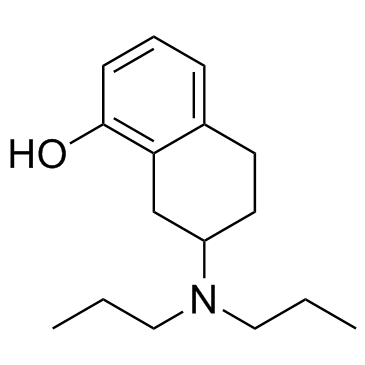
-
GC46753
9(S),12(S),13(S)-TriHOME
An oxylipin

-
GC42640
9(Z),12(Z),15(Z),18(Z),21(Z)-Tetracosapentaenoic Acid
9(Z),12(Z),15(Z),18(Z),21(Z)-Tetracosapentaenoic acid is an ω-3 very long-chain polyunsaturated fatty acid.

-
GC14302
9,12-Octadecadiynoic Acid
El Ácido 9,12-octadecadiinoico (Ácido 9a,12a-octadecadiinoico) es un inhibidor de la lipoxigenasa vegetal.
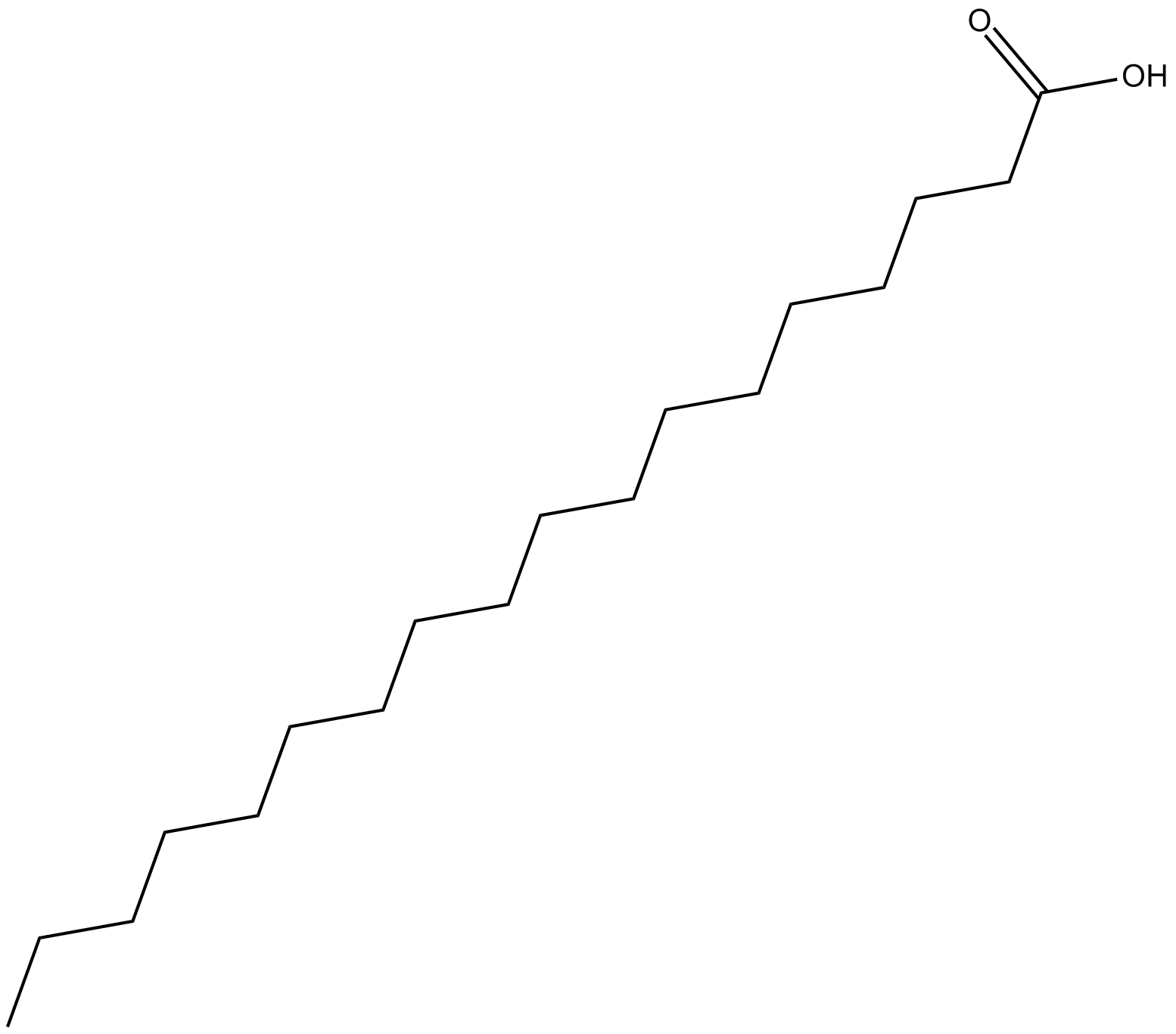
-
GC13537
A 331440 dihydrochloride
H3 receptor antagonist,non-imidazole,high affinity
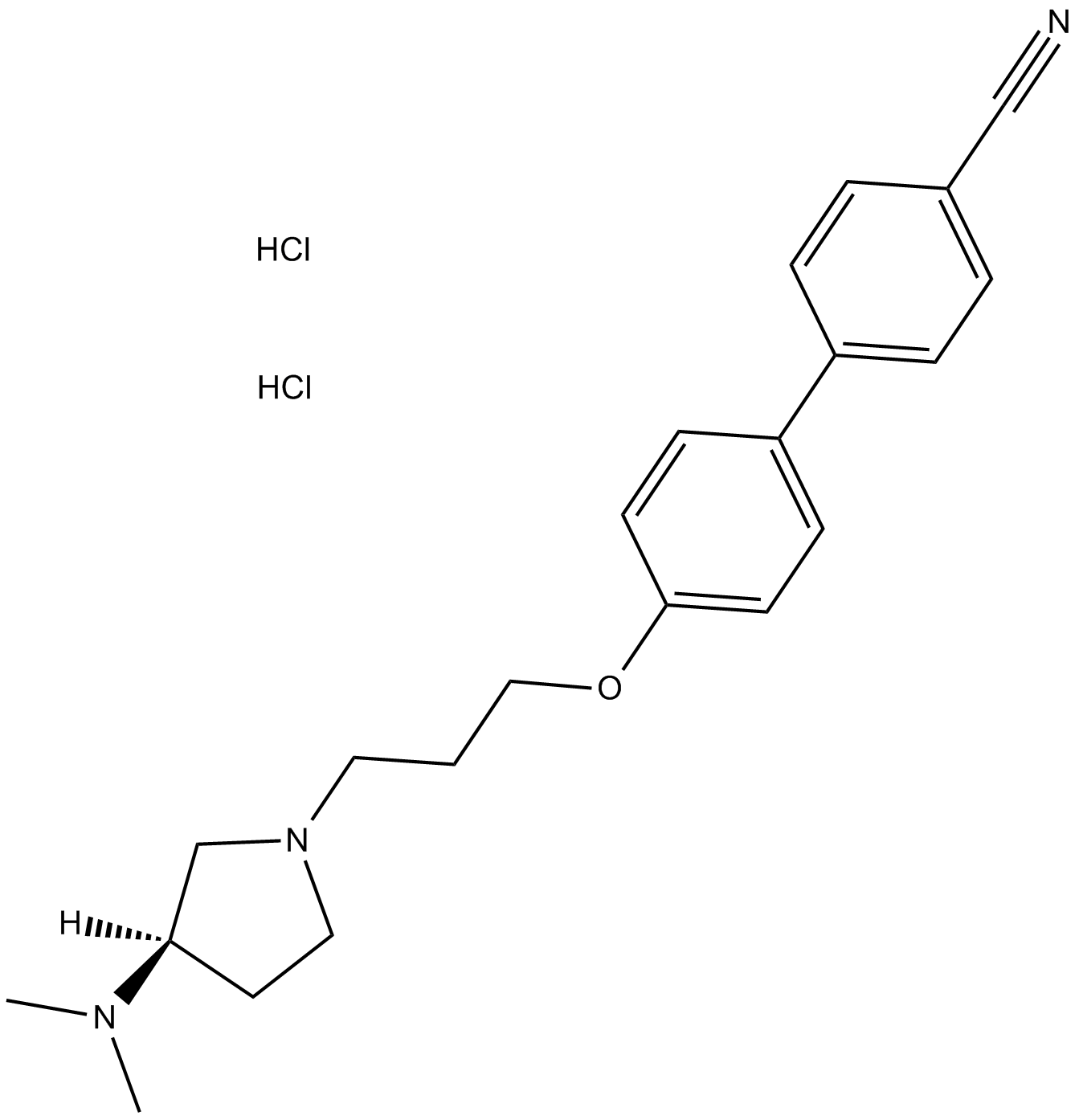
-
GC14610
A 412997 dihydrochloride
Selective D4 agonist

-
GC12739
A 484954
A 484954 es un inhibidor del factor de elongación 2 eucariota altamente selectivo (eEF2), con una IC50 de 280 nM.
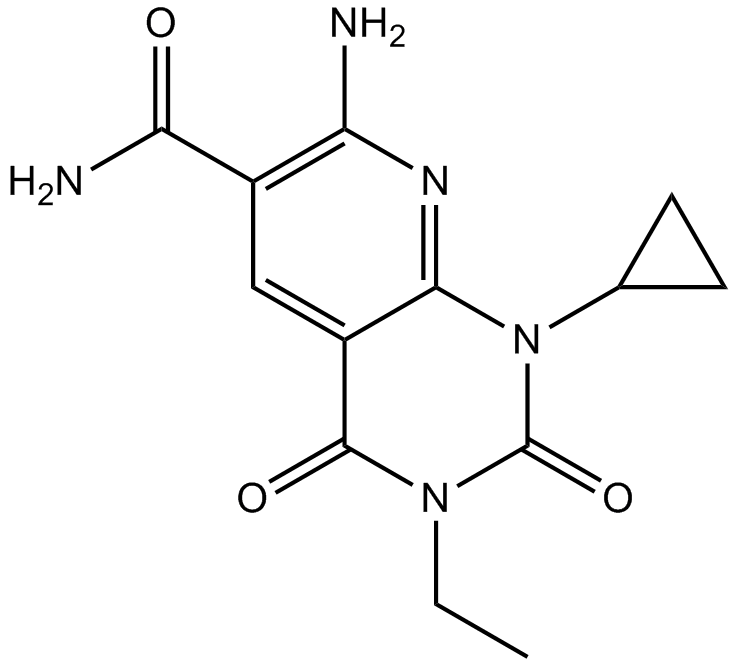
-
GC17805
A 582941
A 582941 es un agonista parcial potente, selectivo y que penetra en el cerebro de α7 nAChR, con Kis de 10,8 y 16,7 nM en membranas de cerebro de rata y corteza frontal humana, respectivamente.
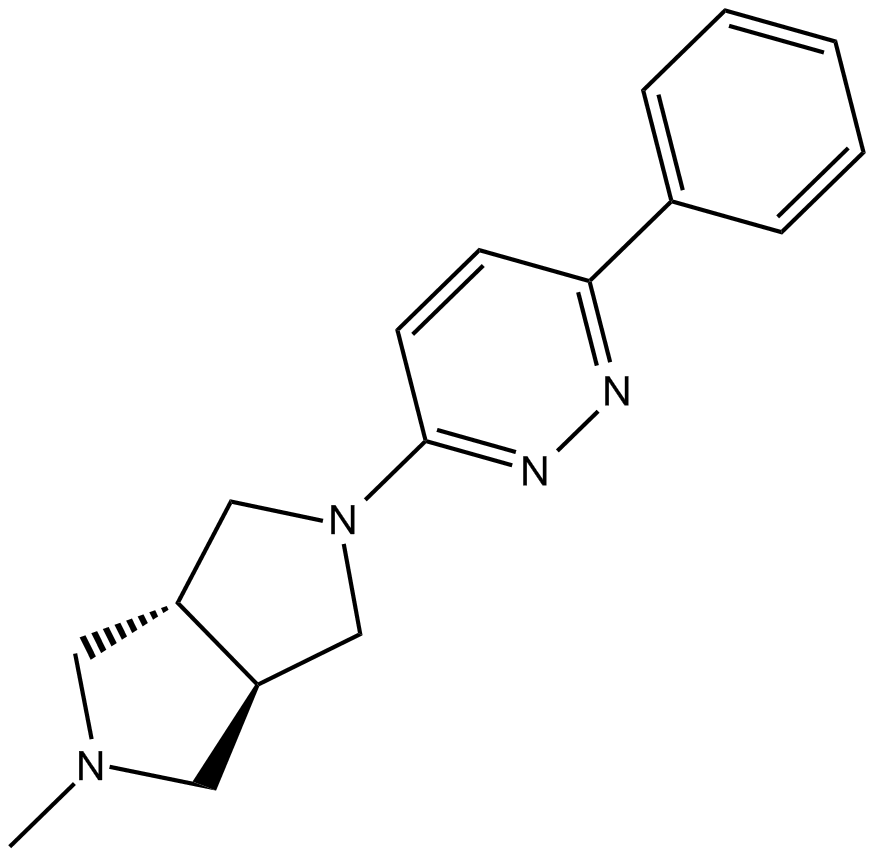
-
GC15498
A 68930 hydrochloride
El clorhidrato de 68930, como agonista del receptor de dopamina D1, se puede utilizar para la investigación de las bronquiectasias.
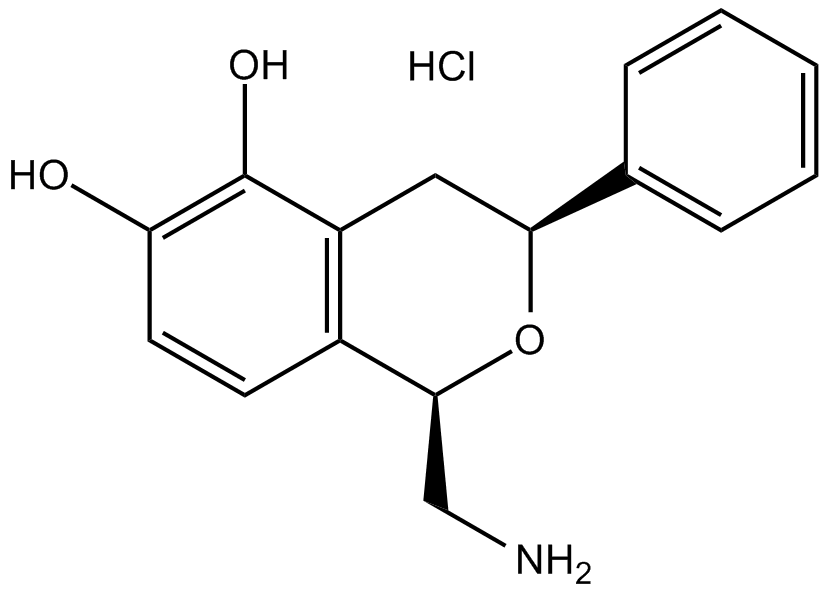
-
GC11183
A 77636 hydrochloride
Un clorhidrato de 77636 es un potente agonista del receptor de dopamina D1, activo por vía oral, selectivo y de acción prolongada (pKi \u003d 7,40; Ki \u003d 39,8 nM) con actividad antiparkinsoniana.
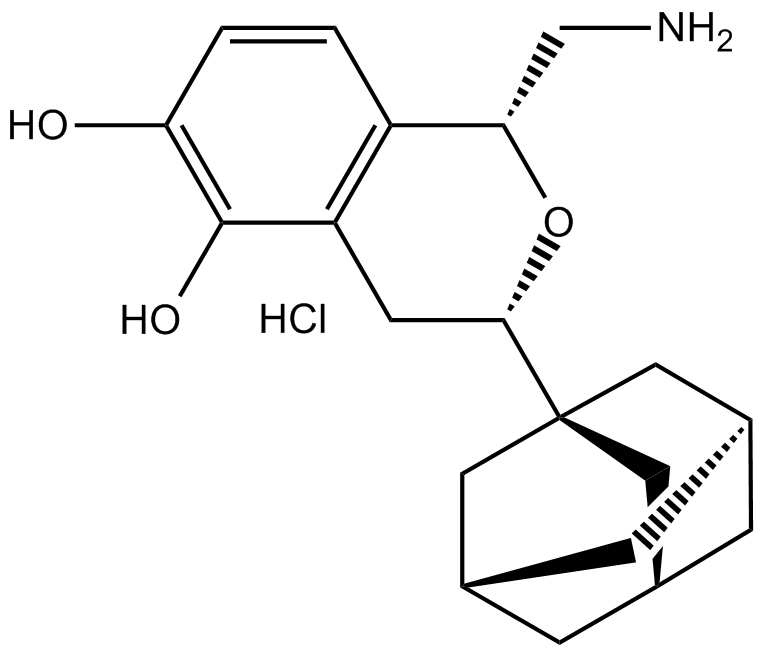
-
GC15434
A 839977
A 839977 es un antagonista selectivo de P2X7; bloquea la entrada de calcio provocada por BzATP en los receptores P2X7 humanos, de rata y de ratÓn recombinantes (los valores de IC50 son 20 nM, 42 nM y 150 nM respectivamente) y reduce el dolor inflamatorio y neuropÁtico en modelos animales; los efectos antihiperalgésicos del bloqueo del receptor P2X7 estÁn mediados por el bloqueo de la liberaciÓn de IL-1beta.
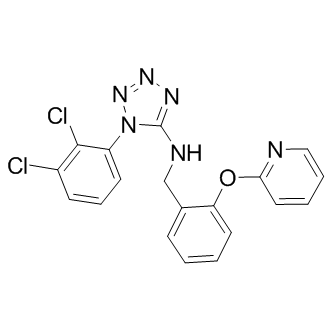
-
GC16068
A 841720
A 841720 es un antagonista del receptor mGlu1 potente, no competitivo y selectivo con una IC50 de 10 nM para el receptor mGlu1 humano.
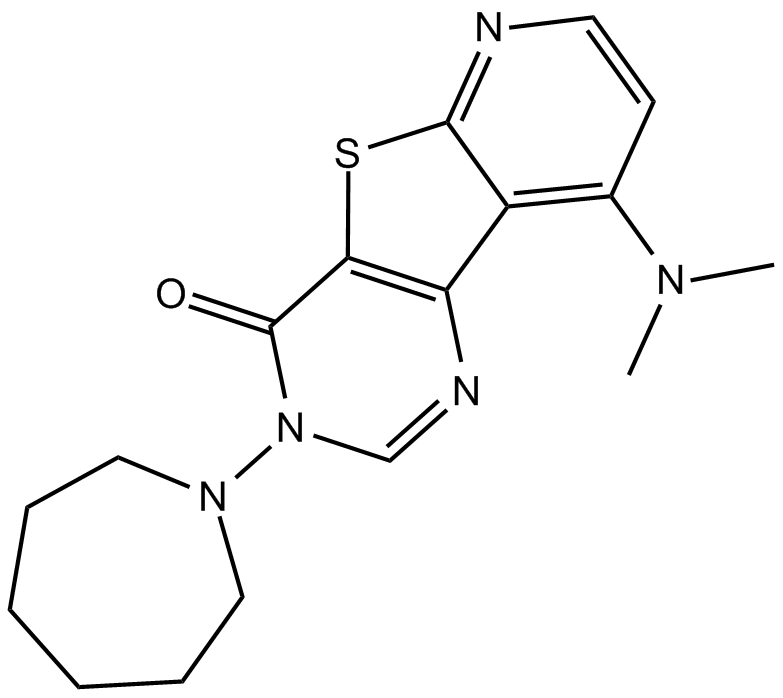
-
GC15333
A 844606
α7 nAChR partial agonist
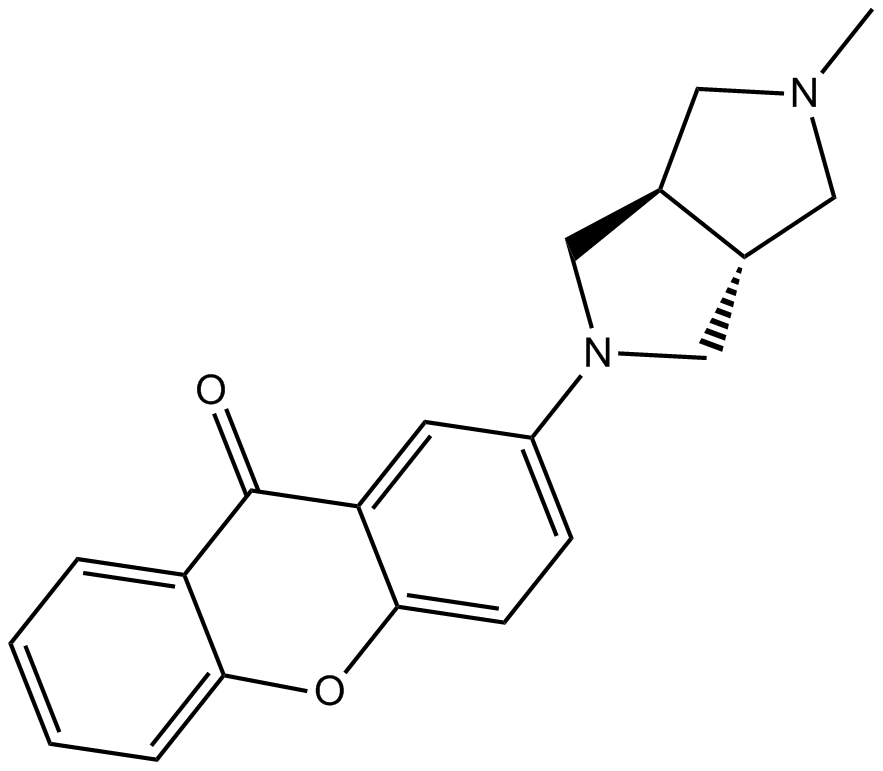
-
GC11121
A 943931 dihydrochloride
Antagonist of histamine H4 receptor,potent and selective
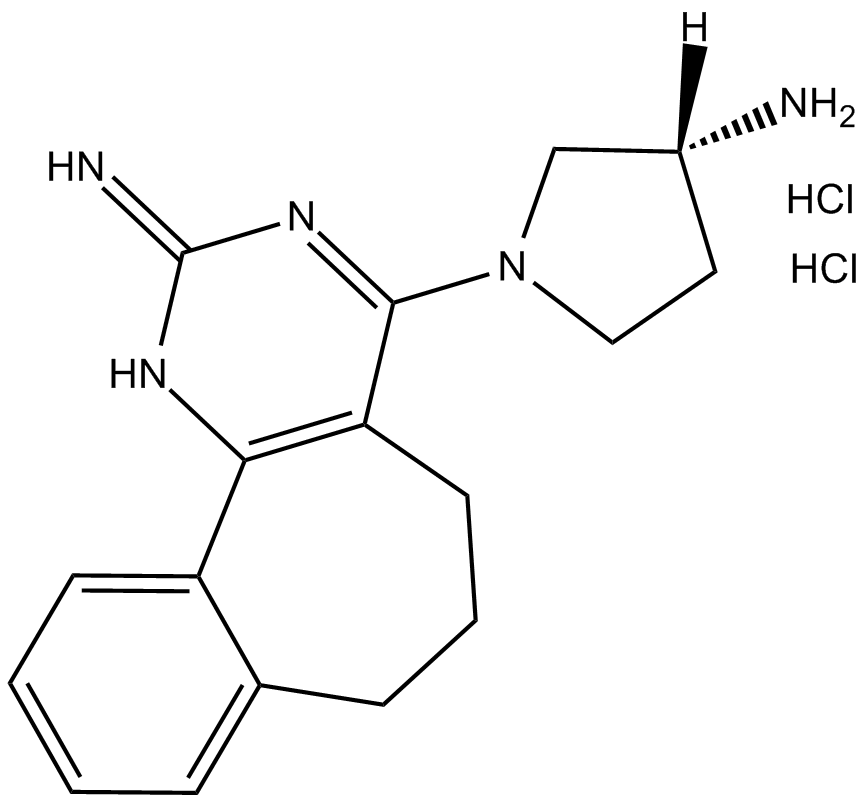
-
GC17743
A 987306
A 987306 es un potente antagonista de histamina H4 biodisponible por vía oral, con Kis de 3,4 nM y 5,8 nM para H4 de rata y H4 humano.
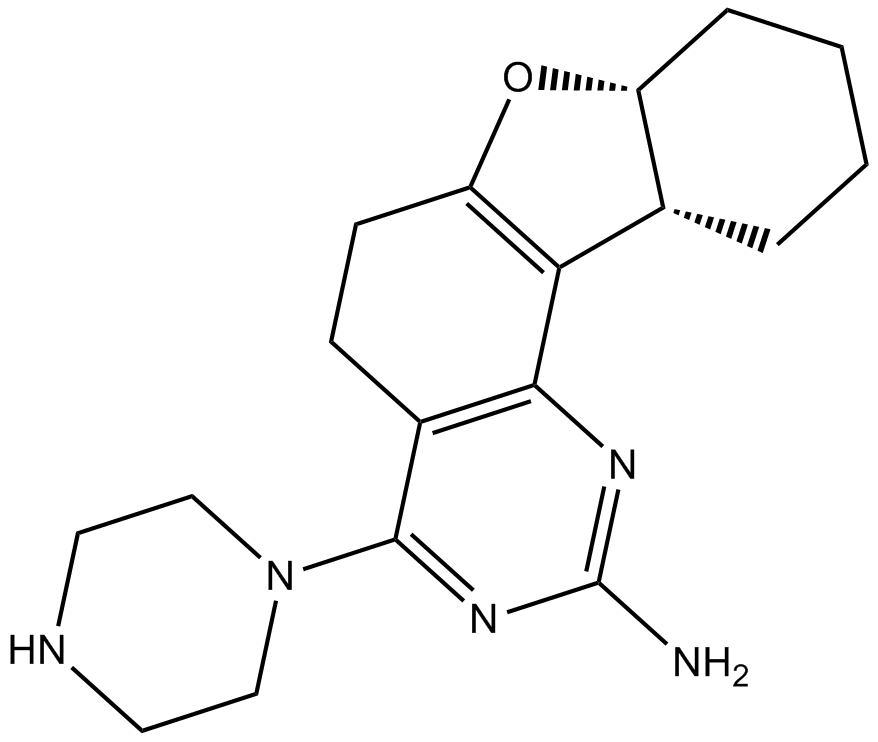
-
GC63502
Aβ/tau aggregation-IN-1
Aβ/tau aggregation-IN-1 es un potente inhibidor de la formaciÓn de lÁminas y de la agregaciÓn de tau.
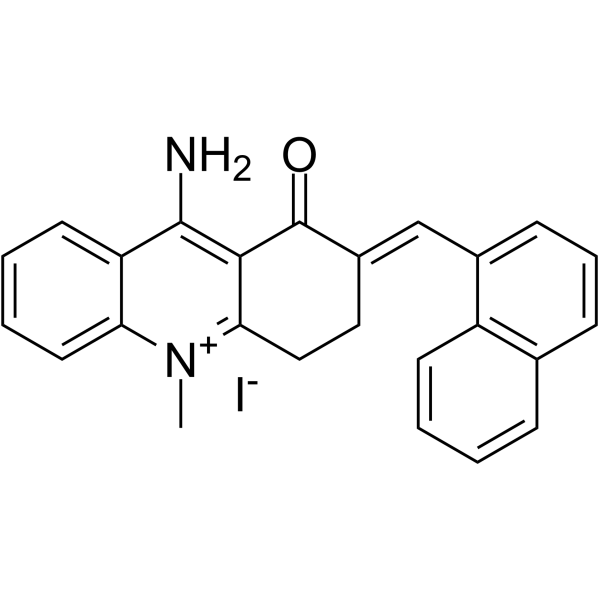
-
GC60037
A-3 hydrochloride
El clorhidrato de A-3 es un potente antagonista no selectivo de varias quinasas, permeable a las células, reversible y competitivo con ATP.
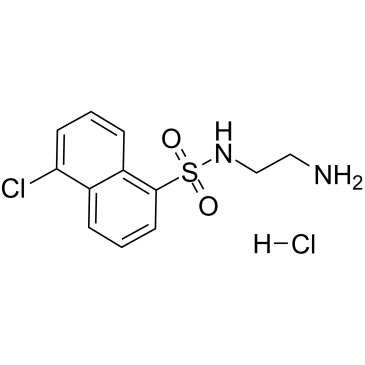
-
GC19499
A-381393
A-381393 es un antagonista del receptor de dopamina D4 potente, selectivo, que penetra en el cerebro, con Kis de 1.5, 1.9 y 1.6 nM para el receptor de dopamina humano D4.4, D4.2 y D4.7, respectivamente, selectividad >2700 veces mayor que Receptores de dopamina D1, D2, D3 y D5.
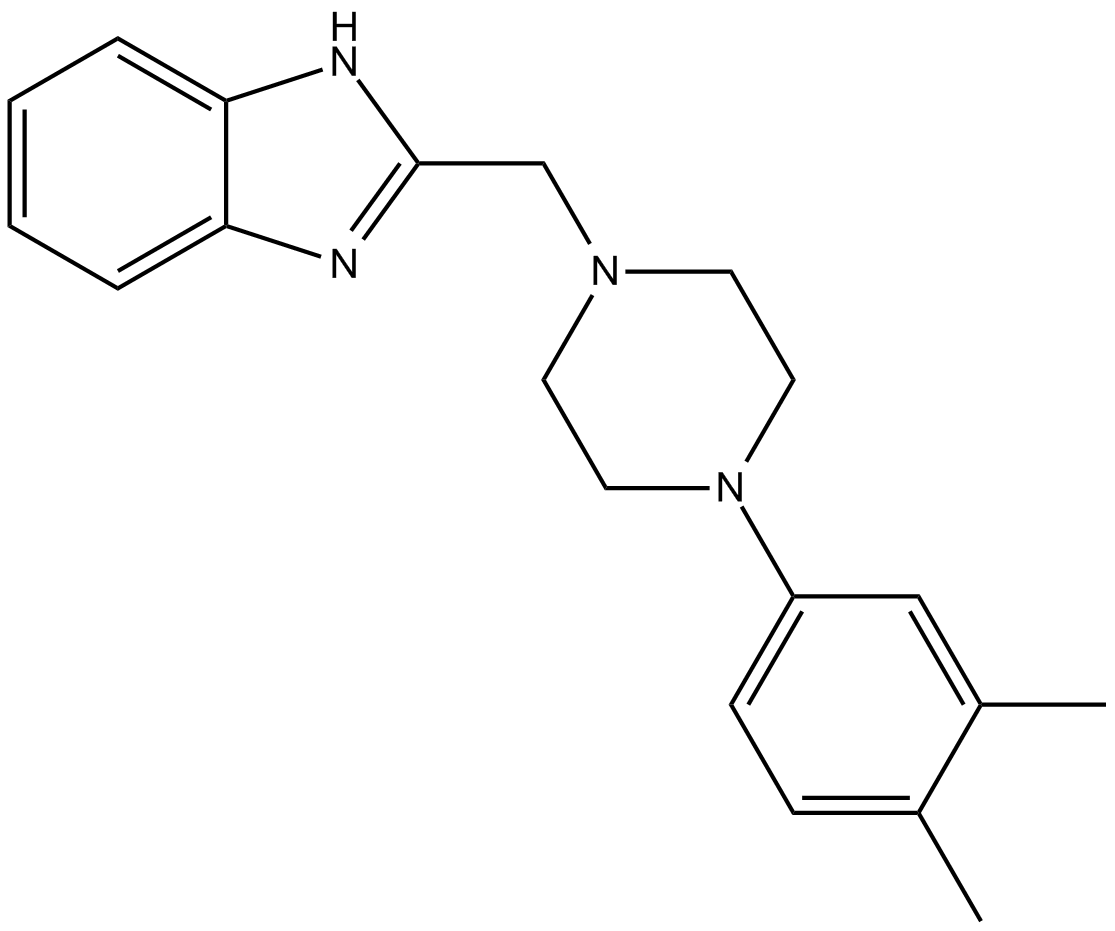
-
GC31214
A-437203 (Lu201640)
A-437203 (Lu201640) es un antagonista selectivo del receptor D3 con Ki de 71, 1,6 y 6220 nM para los receptores D2, D3 y D4, respectivamente.
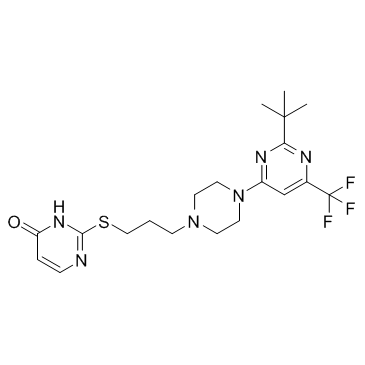
-
GC11842
A-740003
A selective P2X7 antagonist
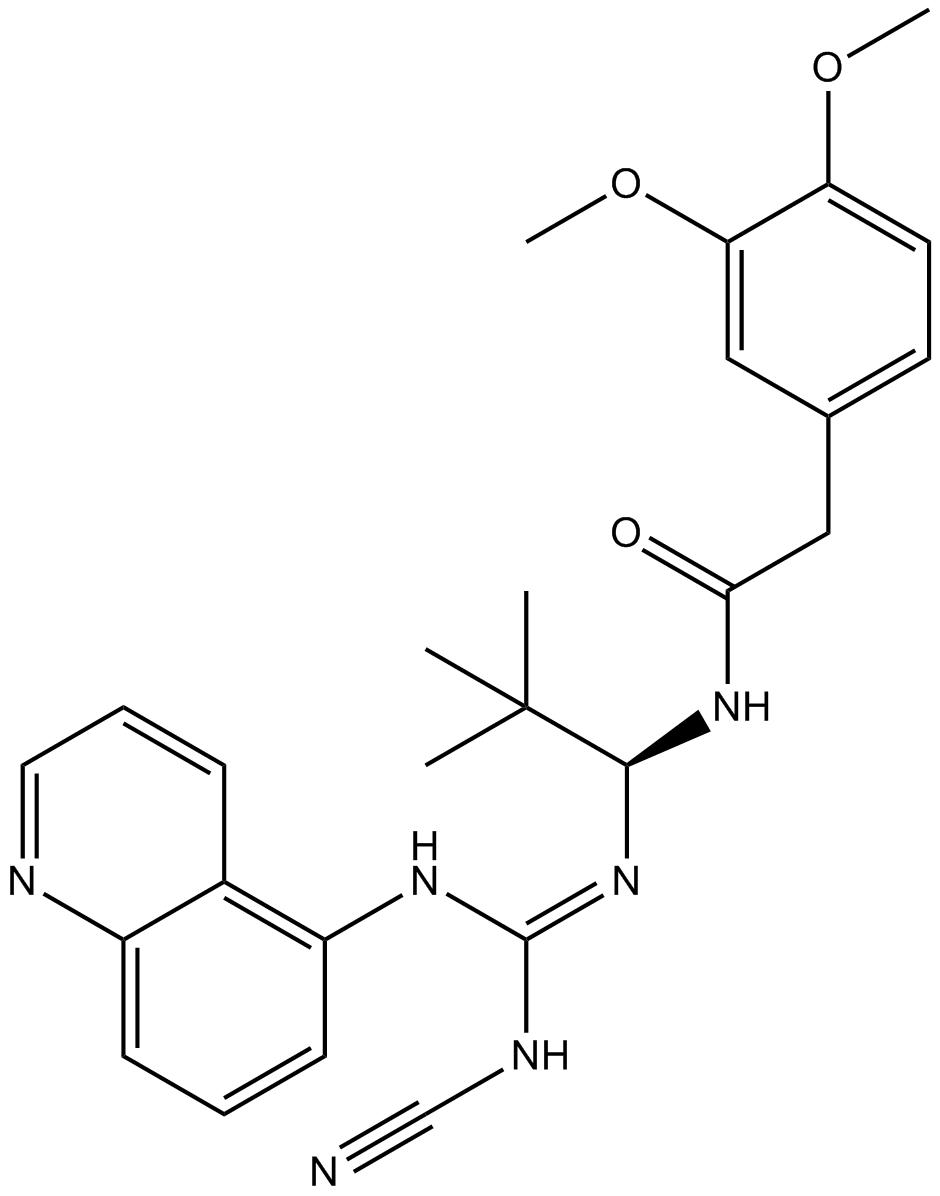
-
GC15014
A-867744
A positive allosteric modulator of α7 nAChRs
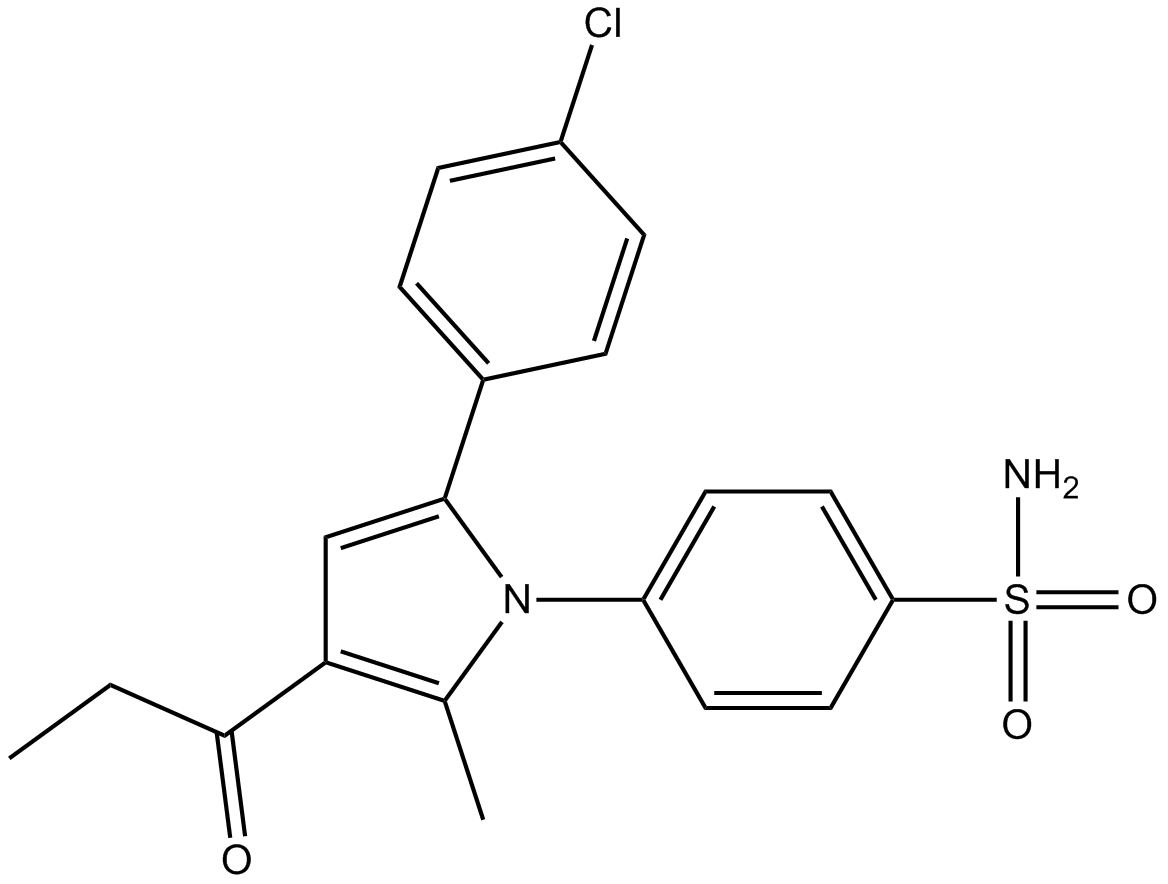
-
GC10641
AA 29504
GABAA receptor modulator
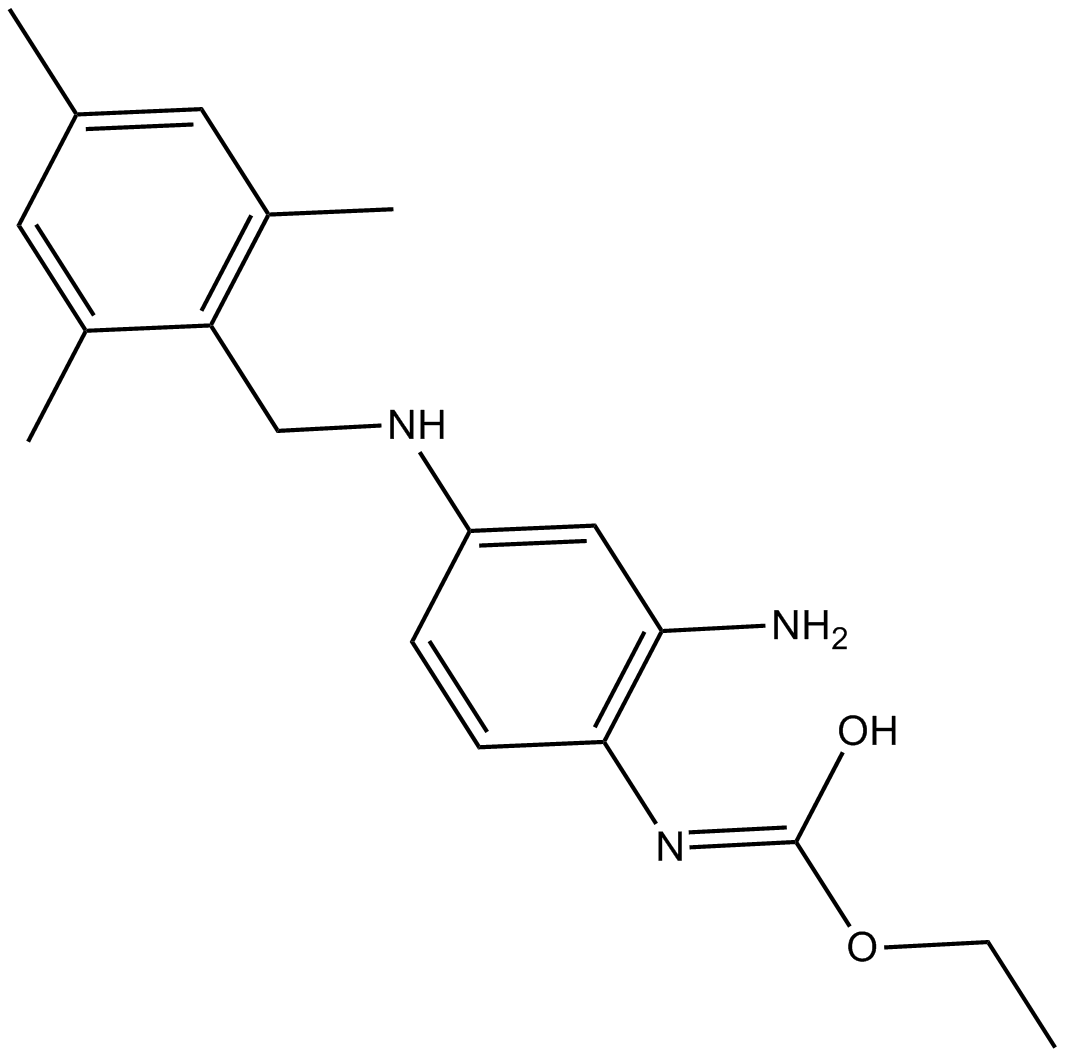
-
GC31055
Abaperidone
La abaperidona es un potente antagonista del receptor 5-HT2A y del receptor D2 de dopamina con IC50 de 6,2 y 17 nM.
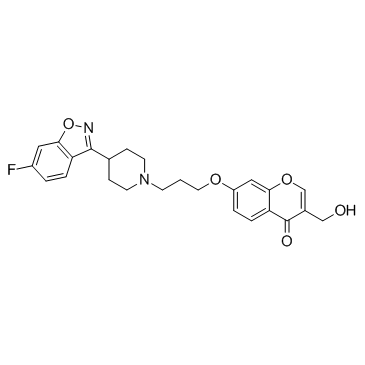
-
GC42674
ABD459
ABD459 is a neutral antagonist of the central cannabinoid 1 (CB1) receptor (Ki = 8.6 nM).

-
GC11795
ABT 724 trihydrochloride
El trihidrocloruro de ABT 724 es un agonista del receptor de dopamina D4 potente y altamente selectivo con una CE50 de 12,4 nM para el receptor de dopamina D4 humano.
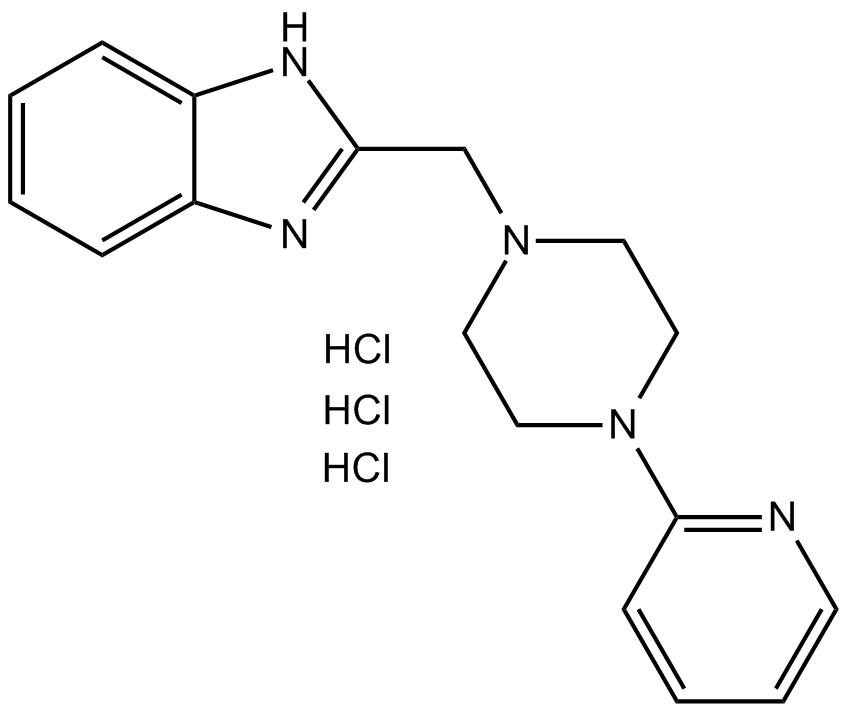
-
GC35222
ABT-239
ABT-239 es una clase de antagonista H3R novedoso, altamente eficaz, que no es de imidazol y un antagonista de potencial receptor transitorio vaniloide tipo 1 (TRPV1).
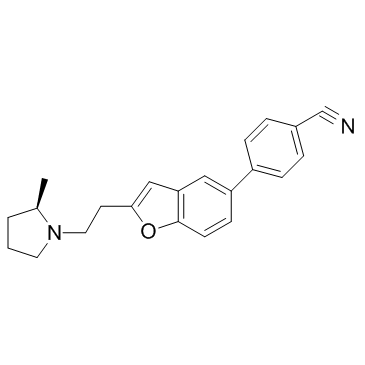
-
GC33552
ABT-670
ABT-670 es un agonista biodisponible oral selectivo del receptor de dopamina D4, con EC50 de 89 nM, 160 nM y 93 nM para humanoD4, hurÓnD4 y rataD4, respectivamente.
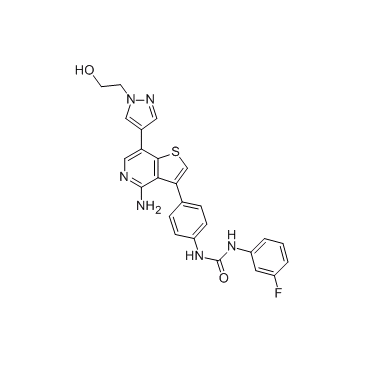
-
GP10121
Ac-Endothelin-1 (16-21), human
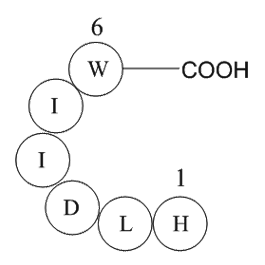
-
GC42721
Ac-YVAD-CMK
Ac-YVAD-CMK es una inhibición caspase-1 (Ki=0.8nM) que sin reversibilidad selectivacaspase-1 (Ki=0.8nM), se puede impedir la actividad de citoquinas proinflamatorias IL-1β. Ac-YVAD-CMK puede reducir la información e induce efectos neuroprotectores duraderos.

-
GC49263
Ac2-26 (human) (ammonium salt)
An annexin A1-mimetic peptide

-
GC30859
AC260584
AC260584 es un agonista alostérico del receptor muscarÍnico M1 con un pEC50 de 7,6.
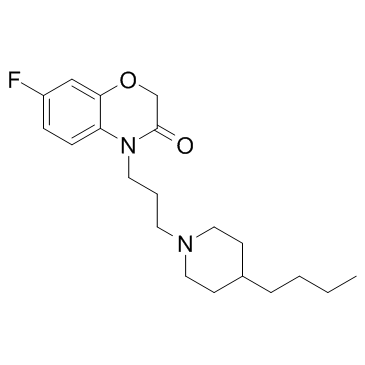
-
GC14916
Acamprosate calcium
An NMDA modulator
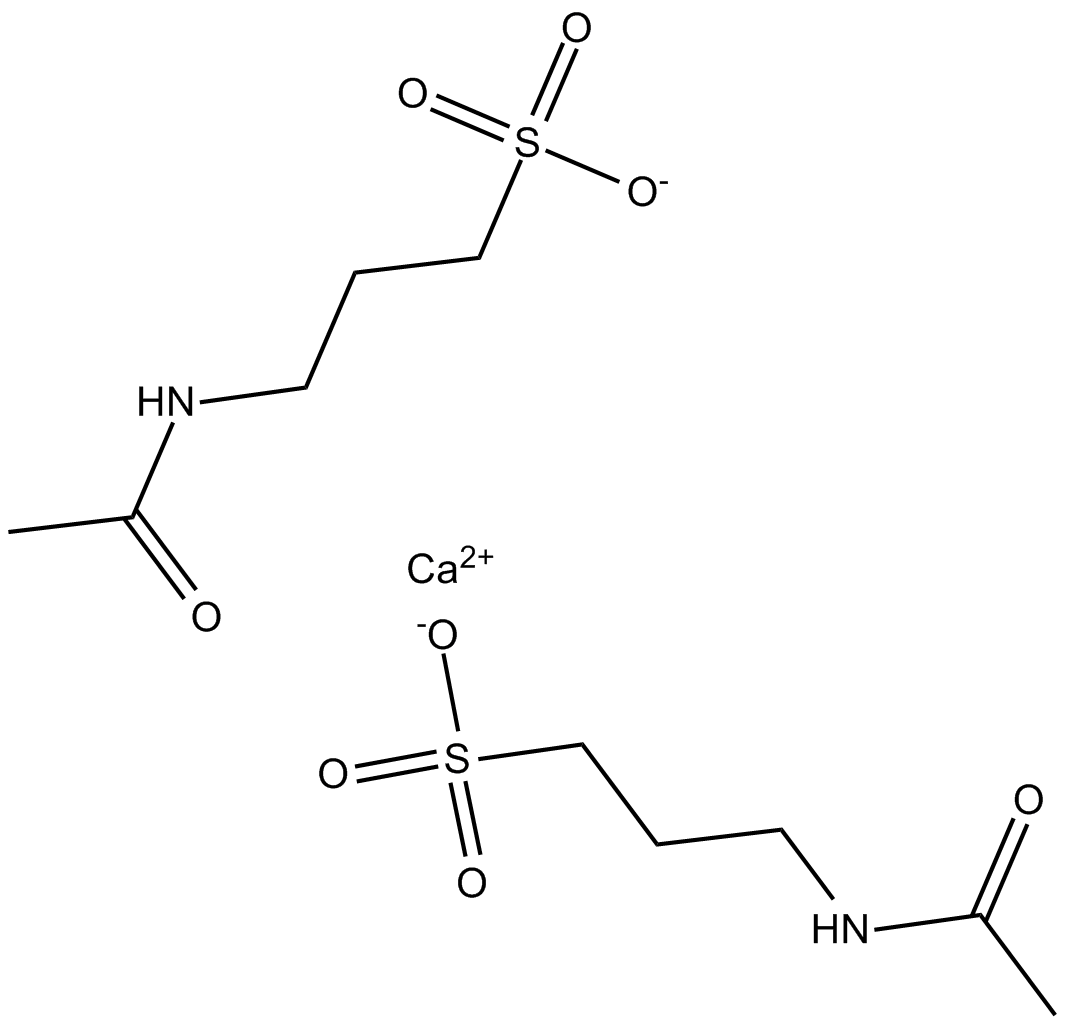
-
GC46778
Acamprosate-d3 (calcium salt)
An internal standard for the quantification of acamprosate

-
GC17079
ACDPP hydrochloride
mGlu5 receptor antagonist
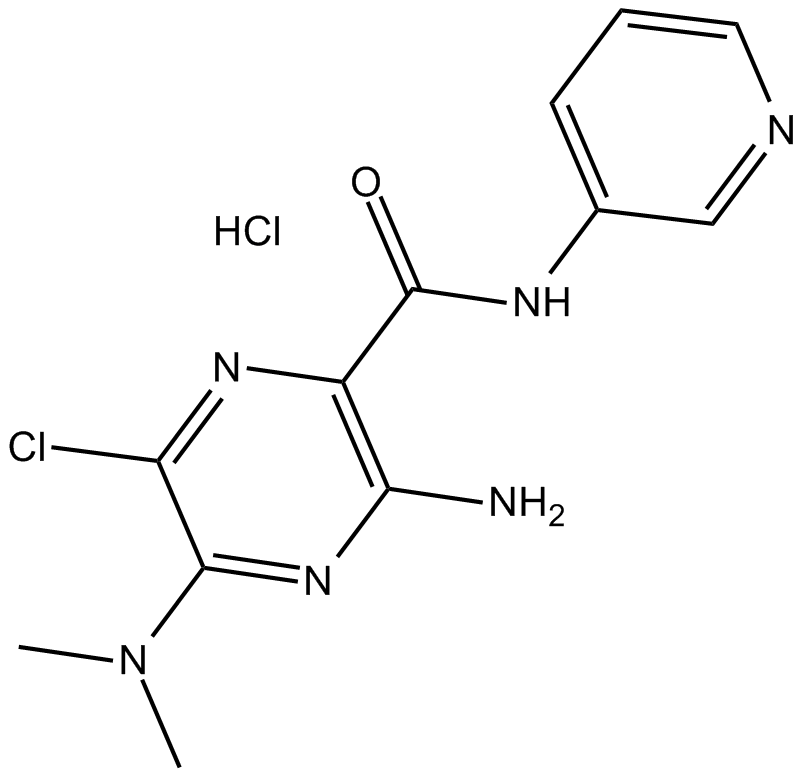
-
GC64332
Aceclidine
La aceclidina es un modulador del receptor muscarÍnico de acetilcolina M3.
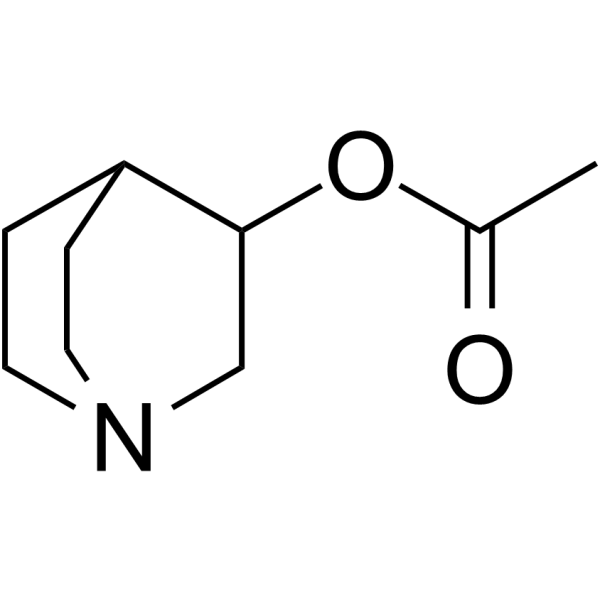
-
GC12787
Aceclidine (hydrochloride)
agonist of muscarinic receptors
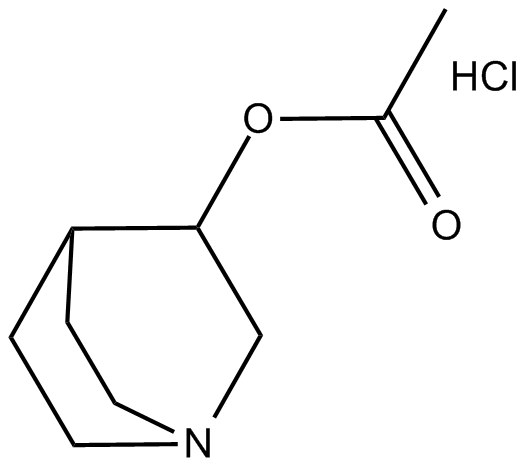
-
GC15902
Aceclofenac
El aceclofenaco es un fÁrmaco antiinflamatorio no esteroideo (AINE) activo por vÍa oral, con propiedades analgésicas y antiinflamatorias.
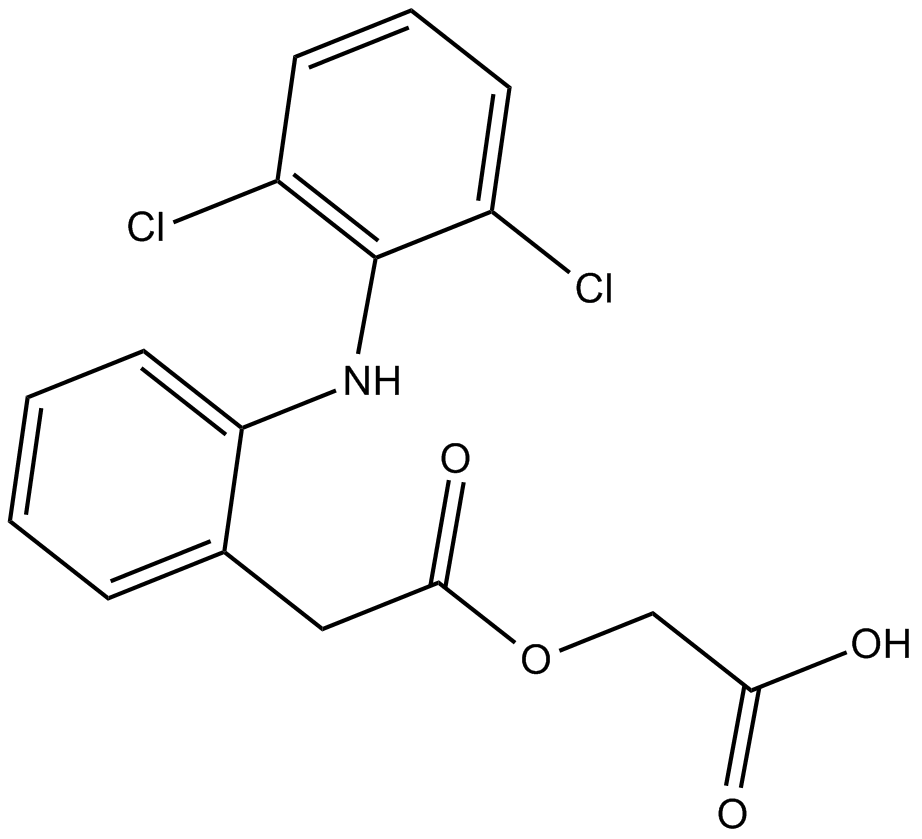
-
GC42691
Aceclofenac ethyl ester
A potential impurity found in commercial preparations of aceclofenac

-
GC42692
Aceclofenac methyl ester
A potential impurity in commercial preparations of aceclofenac

-
GC10454
Acemetacin
La acemetacina (TVX 1322) es un fÁrmaco antiinflamatorio no esteroideo y un éster de Ácido glicÓlico de indometacina que es un inhibidor de la ciclooxigenasa.
